- Skip to main content


Giving a TED-Style Talk? Here’s How They’re Different from Business Presentations
by Jezra on March 18, 2014
In the past few years, TED , TEDx, and TED-style talks have become so pervasive and so popular that, even in business settings, speakers are often asked to give “a TED talk.” (And BTW, TEDx refers to independently organized events held for local communities, or communities of interest.)
If you have a TED, TEDx, or TED-style talk coming up, here are the ways in which your talk will be different from a standard business presentation.
What Makes a Talk Be a TED-Style Talk, Anyway??
First, let’s look at the superficial differences:
- TED-style talks are delivered without notes, from memory . THEY ARE NOT, as some people think, spontaneous; far from it! They are scripted and carefully rehearsed, often for months (or famously, in Susan Cain’s case, for a year). In contrast, most business presenters use notes to deliver their speeches. Unfortunately for us in the audience, those notes are often on their slides .

- TED-style talks are professionally visualized , meaning that someone who knows that they’re doing created your slides or video. This isn’t as true in smaller, TEDx venues — but if someone’s speaking at the mothership (TED), their slides, videos, or animations are generally well-crafted. If they bring props onstage with them — a Teddy bear; a suitcase; or, as neurologist Jill Bolte Taylor really did, a brain! — those props look good, and are well-lit. In fact, the whole stage is well lit. This is called having “high production values,” and it’s something that the vast majority of business speakers have to do without.
- The talks that you see on TED.com have been videotaped from several different angles and skillfully edited . You can see what I mean on this video of Anne-Marie Slaughter speaking about the path to true gender equality for both men and women, or on virtually any other TED video
When most people think about “giving a TED talk,” this is what they picture: a scripted, polished, well-designed, well-produced and edited presentation.
Want Speechwriting or Coaching Help?
But before you start looking for a videographer to make the movie you’ll show during your talk… or for a forklift that can raise you into the air while you’re speaking, like Al Gore in his TED-style movie An Inconvenient Truth , let’s back up and look at some of the easier-to-achieve distinctions between TED-style talks and run-of-the-mill business presentations.
TED Talks Are Also “TED Talks” Because of Their Approach
Most B-flat — that’s music-speak for “average” — business presentations are… well, flat! They’re about conveying facts and expectations, not passions and possibilities. And because business speakers represent their organizations instead of themselves, they tend to be cautious not only in what they say, but in how they say it.
In contrast,
- TED-style talks are personal . The only reason to give a TED talk is that you feel passionately about something, and your sense of purpose creates an energy boost for both you and your audience.
- TED talks often take us on a journey. As the speaker shares his transition from ignorance to understanding of some important truth, we follow along in his footsteps. Where business speeches generally focus on a desired outcome, TED talks are also about the process of realizing how you’re going to get there.
- TED talks are concise. Because their times is short (generally, 5-18 minutes), TED speakers have generally done the hard work of cutting out any extraneous ideas. Ideally, every word of a TED talk counts — and that’s very different from the public speaking most of us are used to!
And last but not least,
- TED-style talks feel important. Almost every speech presents an “ah-hah!” moment (the TED organization uses that phrase), and recounts with great intensity what it feels like to break through a problem in your mind. The problems themselves are often weighty — but even when they’re not, hearing about a breakthrough moment makes you feel that something big is at stake.
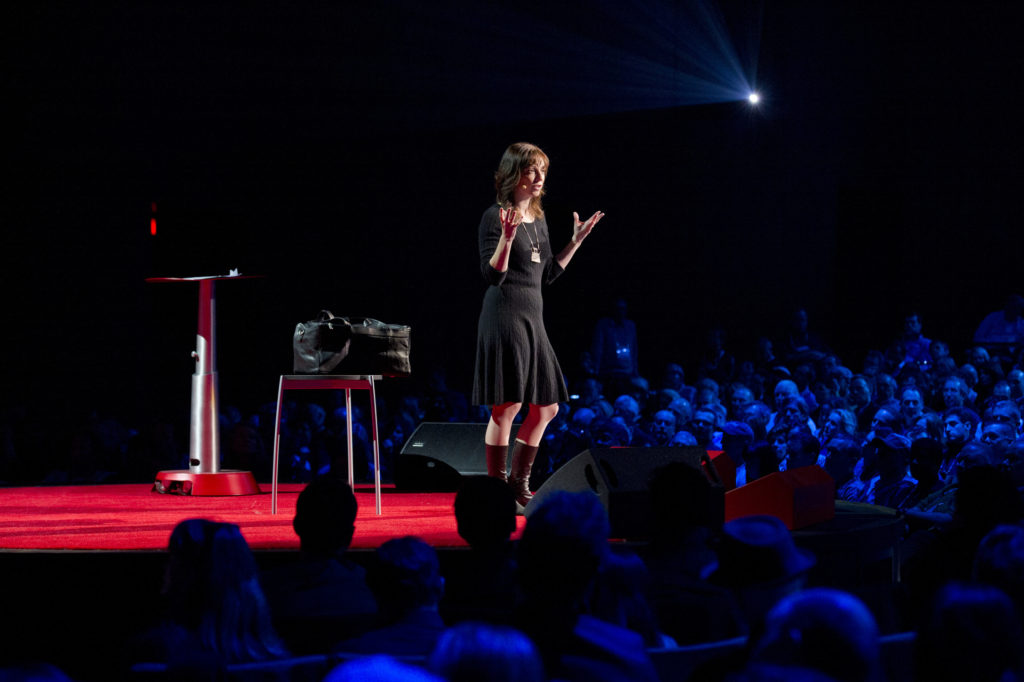
Craft Your TED-Style Talk with These Differences in Mind
Instead of thinking about multimedia, or memorization, or how you’ll look on video, start planning for a TED-style talk by focusing on the differences that matter:
- Choose a topic you’re personally passionate about;
- Play with different ways to narrate (take us on) your journey of discovery around that topic;
- Stay focused on your most important point; and
- Understand what makes all of this important to your audience.
Are you ready to create a talk that you’ll enjoy giving? Here is a step-by-step process for how to do it!
And if you’d like coaching or speechwriting help with your TED-style talk, contact me !
- How can I help you? *
- How did you find me?
You May Also Want to Read...
- TED Has Eliminated Two Things That Used to Be Said In Most Speeches: Hello and Thank You. Should You?
- Public Speaking the TEDx Way: Young TEDx Speakers Make It Look Like Child's Play
- Which TEDx Coaching Plan is Right for YOUR Talk?

Home > Blog > Speaking 101 > What Is A TED Talk? The Fundamentals of TED Explained
What Is A TED Talk? The Fundamentals of TED Explained
Taylorr Payne
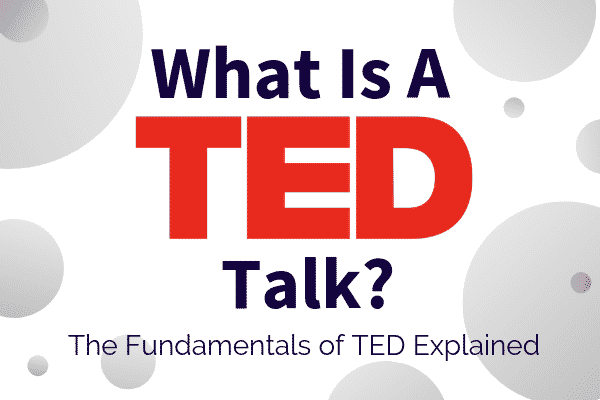
If you’ve been active in the digital realm for a while or grew up as a digital native (like me), you are well aware of how awesome TED talks are. Growing up, my teachers sprinkled TED talks throughout their class materials and assignments to take some of the work off their plate while communicating valuable lessons to me and my classmates. But on the other hand, if you’re reading this and thinking, “Taylorr, what is a TED talk?”….well, do I have a bombshell of motivational, inspirational, awesome videos for you!
Before we jump into the comprehensive guide to TED and their programs, let’s quickly go over the topics we’re going to cover:
What Is A TED Talk?
To get right to business, a TED talk is a short presentation that focuses on technology, entertainment, and/or design. Sorry to disappoint any of you hoping a guy named “Ted” founded the TED Organization. 😬 To put it another way, TED is a non-profit institution that partners with individuals to assist in sharing ideas globally. Today, TED boasts a collection of over 3,000 TED talk videos from politicians to scientists to comedians and actors. Additionally, they add new videos day in and day out, so there’s never a shortage of engaging content.
As an additional plus, each TED talk is available on their website or their YouTube channel for free . That means more ideas shared with more people and more conversations about the world around us. After all, we can all use a little encouragement to learn and grow, and shouldn’t encouragement come without a price tag? The guys and gals at TED definitely think so.
How Long Are TED Talks?
Now, if you’re thinking, “Well, that sounds awesome, but I don’t have time,” I have even more good news for you – TED talks are less than an hour long. In fact, the average TED talk is less than 18 minutes long! That’s shorter than an episode of most of our favorite shows, and yes – I’m looking at you, fans of the Office.
How is TEDx different from TED?
So, we know what a TED talk is now, but how is TEDx different from TED? According to TED, “TEDx events are planned and coordinated independently, on a community-by-community basis, under a free license from TED”. In other words, TED owns and designs the overall structure of the presentation, but the community hosting each TEDx event manages it. This provides a tailored approach to the issues or triumphs of that community and ensures accurate, high-quality material.
Long story short, each TEDx event provides a local speaker a platform for sharing their ideas with their community and, through TED’s online presence, the world beyond. Look at University of Houston research professor Dr. Brené Brown, for example. In June 2010, Brené spoke at TEDxHouston and shared her insights into vulnerability and shame and how, by being open to those emotions and learning from them, we can develop deeper, more meaningful relationships throughout our lives. Now, nine years later, those same insights are available on a national level in her Netflix special, “ The Call to Courage ,” all thanks to TEDxHouston.
We’ll talk, in greater detail, later about some other remarkable TED talk speakers, and you can learn more about the differences between TED and TEDx in this blog from 2021 .
For now, as a side note, if you haven’t seen Brené’s TED talk, you absolutely should. It’s only 20 minutes long, and it is worth every second. 👍
Who Started TED Talks?
But before Brené Brown, before the massive library of 3,000 videos we know today, TED started out small. In 1984, architect and designer Richard Saul Wurman and his colleague, broadcast designer Harry Marks created the first TED talk for a small audience in California.
In an interview before his passing in April 2019, Marks recalled, “I came up with this idea that I wanted to do a conference, but I didn’t know how to do a conference…So Richard came and visited … and I said: ‘Let’s go for a walk.’ I said, ‘I have this idea for a conference that’s technology, entertainment and design, and how they relate to each other, hence TED. Would you help me to do a conference, or would you show me how to do it?’”
Out of that walk came the first TED event, a presentation by mathematician Benoit Mandelbrot about fractal geometry and its use in mapping coastlines. Additionally, Lucasfilm wowed the audience with a demonstration of 3-dimensional graphics for the Star Wars trilogy. Unfortunately, the event was a loss, monetarily, but that didn’t slow Wurman and Marks for long.
Six years later, in 1990, the two men took their talents to Monterey, California and hosted the very first TED Conference , which included presentations for the pillar topics – technology, entertainment, and design – interlaced with musical and comedy performances for the exclusive list of conference attendees.
Today, the TED conference is an annual event on the west coast of the United States and is managed as a non-profit symposium for intellectuals from a huge variety of disciplines, including scientists, clergy members, political figures and more.
And don’t think you’re not included – apply here , and join the discussion!
How Much Does it Cost to Attend a TED Talk?
Unsurprisingly, here’s where it gets a little less fun. The bad news is that the TED Conference only allows members to apply, and membership for a year with TED ranges from $5,000 per year to $25,000 per year. Members of the highest tier, who opt for a five-year membership right off the bat, have to shell out a whopping $250,000 membership fee. I don’t know about you but that seems like a lot of dough for a week of discussion, despite the value in TED’s programs.
On the flip side, the good news is that TED talks and TEDx events are way less expensive to attend and do not require membership. In my home state of Minnesota, there were two events in 2018 and that number has already doubled for 2019, each costing anywhere from $80 to a few hundred dollars per ticket. There are also ten different types of events , including TEDxUniversity events for students and faculty in higher level education and TEDxYouth events for young adults, children, and lower level educational communities. Depending on the type of event, attendance may be entirely free and open to the public, as is the case with their “Salon” events.
[hubspot type=cta portal=5815852 id=fef8b264-4a4a-44c9-aeee-6d582c0ee993]
Do TED Talk Speakers Get Paid?
As long as we’re talking about money, let’s dive into the next question: “Do TED talk speakers get paid?” The answer is…kind of? There is no monetary reward for TED Conference speakers. However, all presenters receive compensation for their travel and hotel costs and a free pass to the five-day conference. Most importantly, your presentation could be turned into a TED talk and shared with the entire, global TED community!
On the flip side, if you’re not a speaker (or if you don’t wish to speak), you can also nominate a speaker for the TED conference and help continue the TED mission of making “Ideas worth spreading” easily accessible to people around the world.
What Makes a Good TED Talk?
Now, if you’re going to speak at a TED event or if you’re checking out speakers from the past, there are a few key ingredients to a good TED talk. Most importantly, these include a new and interesting idea, a concise presentation, and visual aids. So let’s break that down a little bit.
What is the Format of a Good TED Talk?
One of the most watched TED talks out there is Dr. Amy Cuddy’s “ Your body language may shape who you are ”. Since she spoke initially in June 2012, it’s garnered over 52 million views. Additionally, it’s a perfect example of the three key ingredients in TED talks.
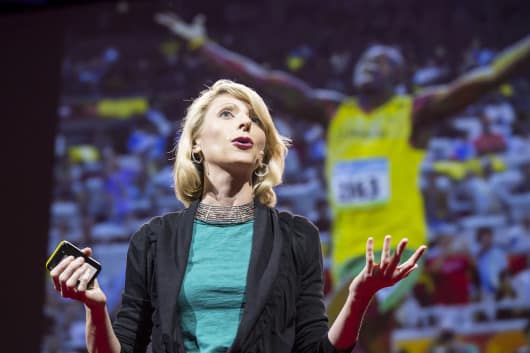
Now the idea that body language is a non-verbal way for others to understand us is nothing new, but the idea that we can shape how we see ourselves with body language? That’s a check for “new and interesting idea”.
Next, at 20 minutes long, Dr. Cuddy’s presentation is just past the 18-minute mark, narrowly meeting the time limit requirement. Check for “concise presentation”.
Last but not least, throughout her talk, Dr. Cuddy uses a series of video clips and slides to illustrate her points and articulate the most important points. Check for “visual aids”.
Together, each of these components – a new and interesting idea, a concise presentation, and visual aids – come together to produce a compelling, engaging presentation that not only delivers an idea for the world to consider but also an opportunity for anyone in the physical or digital audience to take the topic and run with it.
Keep reading to learn more about this year’s TED talks and join in the exchange of ideas!
Top 10 TED Talks on YouTube in 2019
“three ideas. three contradictions. or not.” by hannah gadsby.
When Hannah Gadsby’s comedy show, “Nannette” debuted in 2017, she announced that she was “quitting comedy” because of its self-deprecating nature. Yet, with “Nannette,” her comedy career exploded. Here, she speaks about knowing your purpose and remaining true to yourself.
“How supercharged plants could slow climate change” by Joanne Chory
As part of a world threatened by climate change, TED and the Audacious Project turn here to plant geneticist Joanne Chory who, with her colleagues at the Salk Plant Molecular and Cellular Biology Laboratory, has spent years cultivating plants that store carbon. Watch to learn more about her work and how it has the potential to change the world.
“Why we ignore obvious problems — and how to act on them” by Michele Wucker
No one knows better than policy strategist Michele Wucker the dangers of ignoring predictable problems or, as she calls them, “gray rhinos”. In this video, Wicker discusses the signs there’s a gray rhino charging you and how to stop it.
“Empower a girl, transform a community” by Kakenya Ntaiya
Growing up in Kenya, Kakenya Ntaiya dreamed of an education. As an adult, she turned that dream into the Kakenya Center for Excellence for the young women in her community. Watch to learn how her words are changing lives and how to encourage the same empowerment in your community.
“The most important thing you can do to fight climate change: talk about it” by Katharine Hayhoe
With the growing threat of irreversible damage to the natural world, the words of climate scientist Katharine Hayhoe ring true. In her words, “We can’t give in to despair…We have to go out and look for the hope we need to inspire us to act…and that hope begins with a conversation, today.” Here, she explains how you can drive the effort to save our world, one discussion at a time.
“How to let go of being a “good” person — and become a better person” by Dolly Chugh
In this video, psychologist Dolly Chugh argues for the need to always strive to be an even better person. In other words, no matter how “good” you are, you can always be better. It seems obvious, but it’s a reminder we all need, in every aspect of our lives.
“Inside the black hole image that made history” by Sheperd Doeleman
Last year, for the first time, scientists captured an image of a black hole in a galaxy more than 55 million light-years away. In this video, astrophysicist Sheperd Doeleman meets with TED curator Chris Anderson to share his story and the labors that made this historic event possible.
“Helping others makes us happier — but it matters how we do it” by Elizabeth Dunn
It’s no secret that generosity goes hand in hand with happiness. However, did you know that your happiness directly depends on how you help others? Here, psychologist Elizabeth Dunn argues, “Let’s stop thinking about giving as this moral obligation and start thinking of it as a source of pleasure.”
“How to lead a conversation between people who disagree” by Eve Pearlman
The divide between political groups has grown excruciating, but reporter Eve Pearlman has a simple solution. Here, Perlman explains her work with 25 liberals and 25 conservatives to facilitate productive discussion across the political divide. In doing so, she proposes, “Real connection across difference: this is a salve that our democracy sorely needs.”
“Our dangerous obsession with perfectionism is getting worse” by Thomas Curran
As research for the topic grows, the data surrounding growing suicide rates and instances of mental illness lead more and more researchers to answer the question, “What is causing these problems?” Here, social psychologist Thomas Curran explains the role of perfectionism in our society, how it is playing a role in these problems, and how we can help fix it.
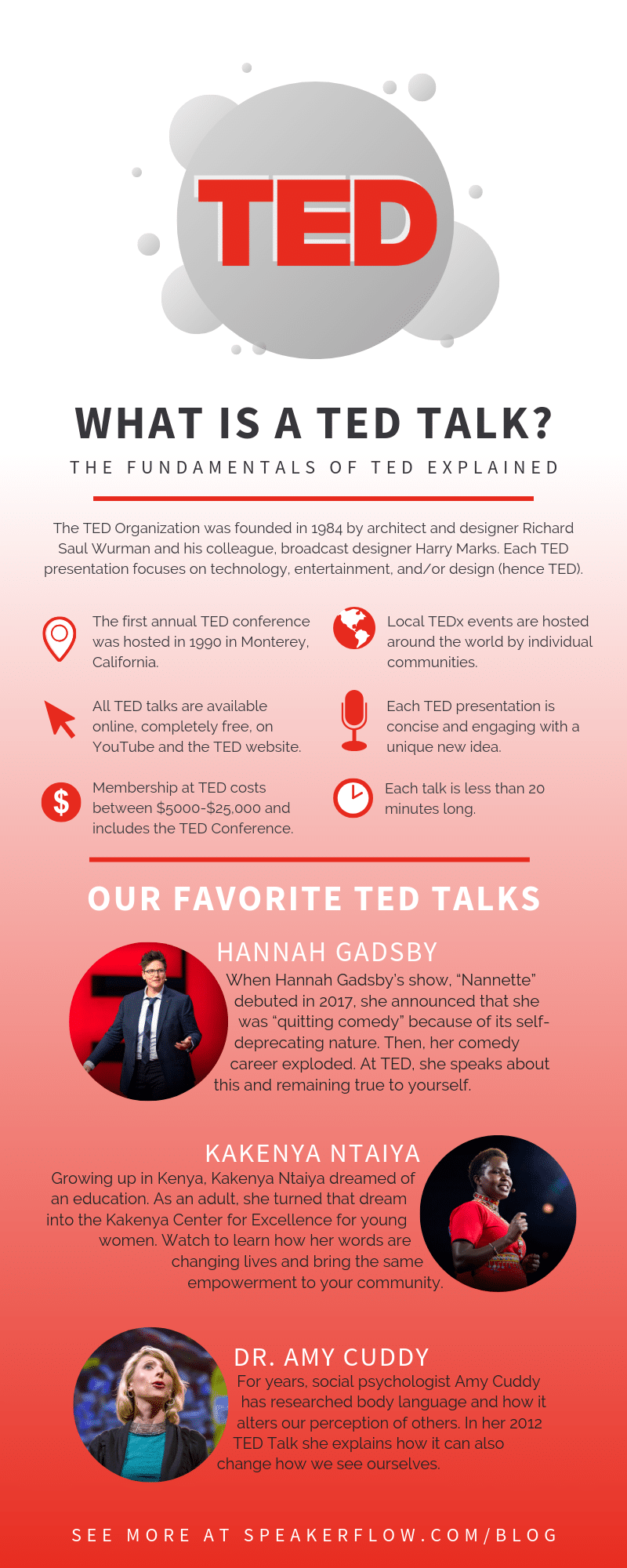
Subscribe To Our Blog
Get updates every time we release a new blog. Plus, join thousands of other speakers, coaches, and consultants learning to use systems to take control of their business.
Other Articles You Might Like

The SpeakerFlow State Of The Industry 2023 Report

Beyond Box-Checking: Why Speaker Diversity Matters

How To Speak Publicly With Confidence
[…] are books on TED talks and TED slides and they pretty much follow some of the five tips above. The fundamentals of TED explained. The timing of the TED talk is critical and usually one theme and one message. I use Greta Thunberg […]
Sitemap | Privacy Policy | Website Terms of Service | Terms of Use | SF University Terms of Service | SpeakerFlow CRM Terms of Service
Made With ❤️ By SpeakerFlow
SpeakerFlow Payment Plans
We understand not everyone’s in a position to pay up front. That’s why we don’t require credit checks or use outside lending services – Just your word. Split your payments over 3 months. 👍
Power Up ⚡️
The system without any live training, migration, or implementation
$1,100.00/mo
Total Over 3 Months: $3,300
Flow Zone 🎯
Done-for-you migration and implementation of our Flow Stack
$2,200.00/mo
Total Over 3 Months: $6,600
Flow Zone+ 🚀
Flow Zone plus migration of other complex systems
$3,666.67/mo
Total Over 3 Months: $11,000
We add a flat rate 10% fee to any financed tier and own the rights to your accounts and its data until the amount is paid in full.
If you’re interested in a payment plan, please email [email protected] .

What Is a TED Talk? Exploring the Global Stage for Ideas
- The Speaker Lab
- March 7, 2024
Table of Contents
Imagine stepping into a world where ideas come to life, sparking conversations and igniting change. That’s the power of a TED Talk—a presentation where visionaries share groundbreaking concepts designed to educate and inspire. Born from a blend of technology, entertainment, and design (TED), these talks have blossomed into global phenomena.
In this article, we will unpack the magic and structure of TED Talks. We’ll also differentiate between grand-scale TED events and community-driven TEDx conferences while tackling criticisms head-on. Ready for an enlightening journey? Let’s start!
The Genesis of TED Talks
Imagine a world where the brightest minds in technology, entertainment, and design come together under one roof. That’s exactly what happened back in 1984 when TED was born . It started as a conference aiming to bring people from these three worlds together for a conversation that would inspire action.
TED has since become synonymous with sparking global discussions. This gathering quickly turned into an annual event after its founder Richard Saul Wurman saw the potential of this interdisciplinary mashup. Picture it: an architect talks about building designs right before a software developer demonstrates cutting-edge technology. This is the kind of lineup that made TED stand out.
The magic ingredient? Ideas worth spreading. This became TED’s official motto and guiding philosophy as it expanded beyond its original trio of topics. The vision was simple yet powerful: give thought leaders 18 minutes or less to share their life’s work or passion projects on stage—and did they deliver. Each talk was just long enough to captivate but short enough to keep attention spans hooked, and attendees walked away with the seeds for change.
The TED Talk Format Unveiled
TED Talks have set the bar high for what a presentation can do: inspire, educate, and move audiences worldwide. These talks come with a signature format that’s as unique as the ideas they present.
First off, every speaker at TED is under a time crunch. They’ve got 18 minutes to share their story or idea—a constraint that breeds creativity and precision. It turns out this sweet spot of just under 20 minutes keeps you glued to your seat because it’s short enough to hold attention but long enough to cover some serious ground.
Beyond timing, storytelling is at the heart of every talk. The best speakers craft narratives that make complex concepts digestible and personal experiences universal.
And let’s not forget visuals. Slides are used sparingly but effectively in TED Talks to support , not distract from, what’s being said. No one wants death by PowerPoint when they’re looking for enlightenment or innovation.
If we peel back another layer, we see each talk revolves around an “idea worth spreading.” This isn’t just any catchphrase—it’s why these presentations pack such punch even after years since their release on TED’s platform . From tackling global challenges to sharing breakthroughs in science or heartfelt personal journeys—there’s no limit on topics so long as they’re thought-provoking.
This blend of brevity, storytelling, visual simplicity, and depth makes TED Talks informative and captivating. They resonate on a deeper level because someone lived through them first-hand before taking the stage.
Find Out Exactly How Much You Could Make As a Paid Speaker
Use The Official Speaker Fee Calculator to tell you what you should charge for your first (or next) speaking gig — virtual or in-person!
Themes and Topics Covered in TED Talks
TED Talks are a kaleidoscope of knowledge, spanning the gamut from intricate workings of the brain to the vast complexities of space. Each one is a deep dive into subjects that captivate and inspire, challenging us to look at our world through fresh lenses.
At its core, science stands as one cornerstone with talks delving into climate change, neuroscience, or quantum computing. These presentations not only demystify hard-to-grasp concepts but also ignite curiosity about our universe’s wonders. Business enthusiasts lean towards discussions around leadership principles and innovative startup ideas that can shake up traditional industries.
Concerning global issues, speakers tackle pressing challenges like poverty alleviation or explore cultural narratives shaping societies. In these TED Talks, personal stories intersect with larger societal concerns. These tales often act as powerful catalysts for change.
Cultural Conversations Sparked by Personal Narratives
Weaving threads between individual experiences and broader cultural themes is an art form perfected on the TED stage. Speakers recount journeys marked by triumphs or trials in their TED Talks. They explain social justice movements or explorations of identity, giving voice to diverse perspectives previously unheard in mainstream discourse.
Distinguishing TEDx Events from TED Conferences
Chances are you’ve heard of TED Talks before. But did you know there’s a cousin to these events called TEDx? Yep, these TEDx events are like the grassroots version of the bigwig TED conferences.
TEDx events are independently organized local gatherings that allow people to get a taste of what happens at global TED conferences . They can pop up anywhere from bustling cities to small towns. While they keep true to the spirit of TED, each event adds its own local flavor. But don’t let their independent status fool you—TEDx organizers get a free license from TED , but they must stick closely to specific guidelines to ensure every event maintains certain standards.
The beauty is in how inclusive these events are. Anyone passionate enough can organize one and shake things up in their community ( even you !). While the speakers here may not be household names, they’re often just as innovative and compelling as those on bigger stages. In fact, many talks given at these smaller venues have gone viral, proving that great ideas don’t need grand stages.
So while mainstage TED has its allure, TEDx events are also idea-sharing powerhouses igniting change across all corners of society.
Accessibility and Inclusivity in the World of TED
TED’s mission to spread ideas reaches far beyond just those who can afford a ticket to a live event. It’s about sparking conversations, sharing knowledge, and building communities across every corner of the globe. But how does TED break down barriers to make this happen? Well, it starts with recognizing that great ideas don’t mean much if they’re not heard by everyone.
To give these talks wings, TED Translators jump into action. This army of volunteers tirelessly works to subtitle videos in 100+ languages. So if you’re watching a groundbreaking talk on artificial intelligence but English isn’t your first language, don’t sweat it. Thanks to translators, you can ride the wave of innovation without getting lost at sea.
Beyond subtitles, there’s also free online access to TED Talks, allowing millions worldwide to tune into inspiring sessions from their living rooms. Accessibility tools are key too; think audio descriptions for visually impaired enthusiasts or transcripts for those hard-of-hearing—all ensuring no one misses out because they learn differently.
Bringing Diverse Speakers to the Stage
Another great thing about TED Talks? Diversity among speakers matters big time. After all, if we only hear from one kind of person with one worldview then TED’s motto becomes idea worth spreading—not very inspirational. Recognizing this, TED Talk event organizers ensure that the people on stage come from a diversity of backgrounds. TED’s initiatives aim at amplifying underrepresented voices in order to spark dialogues that resonate with people everywhere.
And we need conversations sparked by all sorts—from entrepreneurs fighting climate change in Sub-Saharan Africa to teachers flipping classrooms upside-down in rural India. If progress wears many faces then shouldn’t our platforms reflect that?
Behind the Scenes of Organizing a TED Event
Think of organizing a TED event as orchestrating an elaborate dinner party, but instead of food, you’re serving up brain-nourishing ideas. The first order on this intricate menu is curating speakers who can whip up thought-provoking talks. It’s not just about smart people talking; it’s about crafting narratives that resonate and stick.
TED organizers spend months scouting talent—much like sports scouts in bleachers with binoculars—but they’re looking for intellectual game-changers. They sift through hundreds of applications and recommendations, seeking those rare individuals whose stories have the power to ignite change. Once selected, these candidates begin intense coaching sessions designed to shape their message into a fine-tuned performance.
The venue setup also matters. From lighting to acoustics, it all adds up to create an atmosphere where big ideas feel at home. Teams work tirelessly behind-the-scenes managing logistics so attendees can seamlessly float from one talk to another.
Free Download: 6 Proven Steps to Book More Paid Speaking Gigs in 2024
Download our 18-page guide and start booking more paid speaking gigs today!
Criticisms and Controversies Surrounding TED Talks
Even the most polished platforms aren’t immune to scrutiny, and TED Talks are no exception. Critics often argue that their sleek format may oversimplify complex subjects. It’s a bit like trying to explain quantum physics using only emojis—nuances get lost in translation. Some experts fear this condensation can distort or dilute serious academic research into soundbites fit for social media rather than fostering deeper understanding.
TED’s exclusivity also comes under fire. With tickets to live events costing thousands of dollars, TED paints an image of intellectual elitism. While these conferences might seem like modern-day symposiums for the upper crust, TED has taken steps to democratize knowledge through initiatives such as freely accessible talks online. In addition, the TEDx program lets local communities host their own events.
This dichotomy between accessibility and exclusivity is at the heart of many debates about TED’s role in disseminating ideas. Is it broadening horizons or just preaching to the choir? As a speaker platform aiming for impact, it straddles a fine line between making content available for all yet maintaining a reputation that attracts thought leaders who often come with price tags reflective of their status.
FAQs on What is a Ted Talk
What does ted stand for.
TED stands for Technology, Entertainment, Design, the trio of fields that fueled the conference’s birth.
Can anyone give a TED Talk?
Sure thing! Anyone with an idea worth spreading can step up to the TED stage. You just need to get noticed first.
What is the purpose of a TED Talk?
The goal is simple: spark conversations, share insights, and inspire action across every discipline imaginable.
So, what is a TED talk? It’s an idea incubator that merges the best of tech, entertainment, and design to stir our thoughts. You should now grasp their unique format—snappy yet profound—and how they cover topics from A to Z with flair.
Remember this: TED Talks aren’t just events; they’re catalysts for change. They challenge norms and spark dialogues on education and innovation that can ripple out far beyond their stage.
In closing: keep asking questions and stay curious. Because when it comes to sharing powerful ideas, TED Talks are only the beginning.
- Last Updated: March 7, 2024

Explore Related Resources
Learn How You Could Get Your First (Or Next) Paid Speaking Gig In 90 Days or Less
We receive thousands of applications every day, but we only work with the top 5% of speakers .
Book a call with our team to get started — you’ll learn why the vast majority of our students get a paid speaking gig within 90 days of finishing our program .
If you’re ready to control your schedule, grow your income, and make an impact in the world – it’s time to take the first step. Book a FREE consulting call and let’s get you Booked and Paid to Speak ® .
About The Speaker Lab
We teach speakers how to consistently get booked and paid to speak. Since 2015, we’ve helped thousands of speakers find clarity, confidence, and a clear path to make an impact.
Get Started
Let's connect.
Copyright ©2023 The Speaker Lab. All rights reserved.
- Agency of record
- Creative strategy
- Design on demand
- Design at scale
- Design for startups
- Communications
- Sales enablement
- Presentations
- Startups & entrepreneurs
- Video & motion graphics
- Design process
- Partnership & pricing
How to build a TED Talk-worthy presentation

If you’ve experienced the challenge of developing and/or delivering an important presentation to a good-sized audience, there’s a chance you hoped it would go as well as a TED Talk—those incredibly well regarded presentations first popularized by the TED Foundation in the mid 2000s. TED Talks are often considered the “Everest” of engaging, informative presentations. Killing it on the TED stage is significant.
So with the intention of acting as your presentation sherpa, this article offers 8 steps to give you the best chance of building and delivering a TED Talk-worthy presentation.
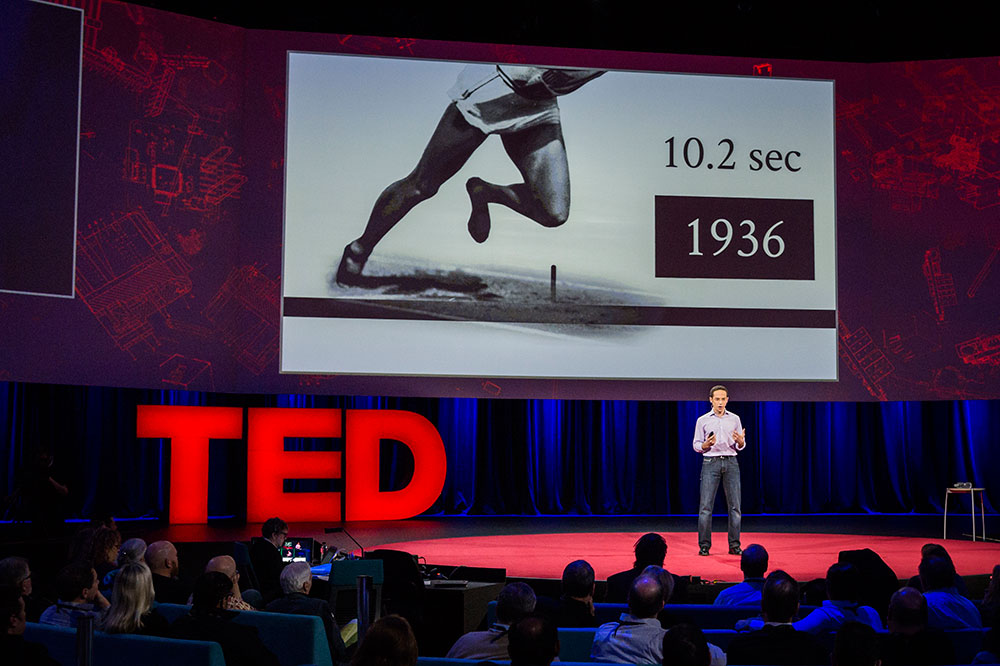
TED Talks. People listen.
TED is a nonprofit with a mission to “spread ideas.” It began as a one-off conference (on technology, entertainment and design) in 1984—eventually evolving to a point where it launched an audio and podcast series called TED Talks .
From the history page on their site:
“ The first six TED Talks were posted online on June 27, 2006. By September, they had reached more than one million views. TED Talks proved so popular that in 2007, the TED website was relaunched around them, giving a global audience free access to some of the world’s greatest thinkers, leaders and teachers.”
As a result of their success and popularity, TED Talks have inspired many other presentation-centric activities and events—such as conference keynotes and investor fundraising “demo days.”
What makes a TED Talk?
TED presenters arrive from all walks of life, and although their TED Talks span a wide range of topics, they all share a few characteristics:
- 18 minutes or less. This is a TED rule, initiated by their founder, Chris Anderson, and also backed by scientific research . The basic premise is 18 minutes is long enough to do the job, but short enough to avoid having your audience begin to lose interest.
- A big idea, worth sharing. Again, straight from TED. But expecting to deliver a compelling presentation that relays several meaty ideas in under 20 minutes is wishful thinking. By focusing on a single, compelling concept—you ensure maximum impact and can more successfully communicate key points.
- Large audience, sizable venue. One-to-one, or one-to-few presentations delivered in a meeting or conference room play by different rules. We’re not addressing those here.
8 steps to the TED Talk mountain top
TED Talks are so well done they can almost seem magical. But it isn’t wizardry that makes them so compelling. In fact, there’s a formula you can follow—8 steps that will allow your presentations to deliver similar impact:
Step 1: Know your audience
This is fundamental for maximizing the success of any communication. In order to relay your “big idea” in the most effective way, you need to understand what your audience knows and cares about. Then tailor your presentation appropriately.
If you’re presenting to a new or relatively unknown audience, there are some quick ways to gather intel—such as researching and reading an applicable Reddit thread, or having a quick conversation with someone who’s more familiar.
Step 2. Scout your venue
As a general rule, the background of your slides should match the room in which you’re presenting. It’s not uncommon for large venues to be darkened so the visual focus is on what’s on stage. In some instances, however, stage environments can be illuminated or even a specific color or color theme. Matching slide backgrounds to the specifics of your venue can be very effective—allowing eyes to be drawn to the presentation’s content, not the full outline of the slides themselves.
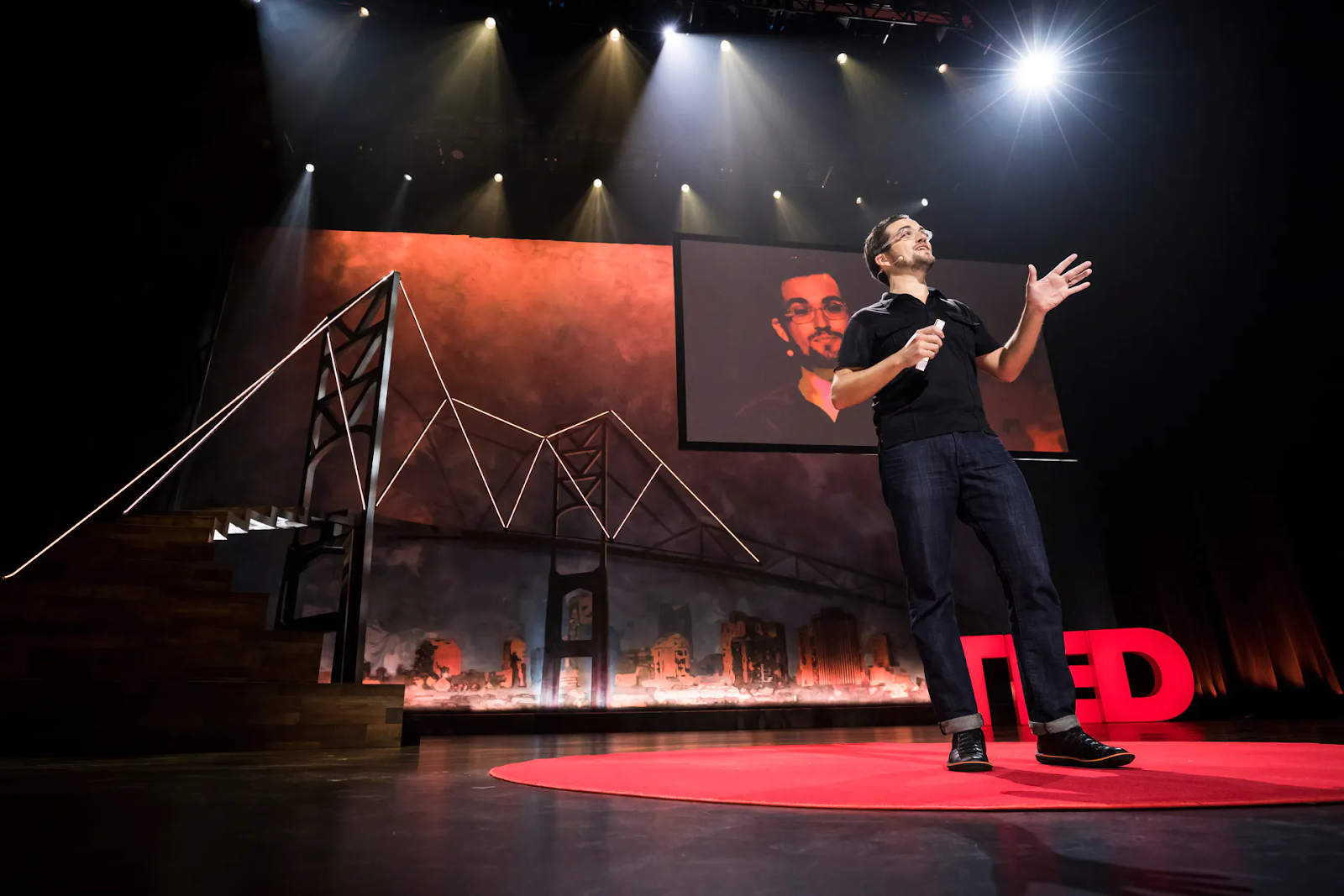
Keep audience viewing angles and distance in mind as well. You want them on the edge of their seats, but not because they’re leaning forward and squinting to try and make out your tiny words.
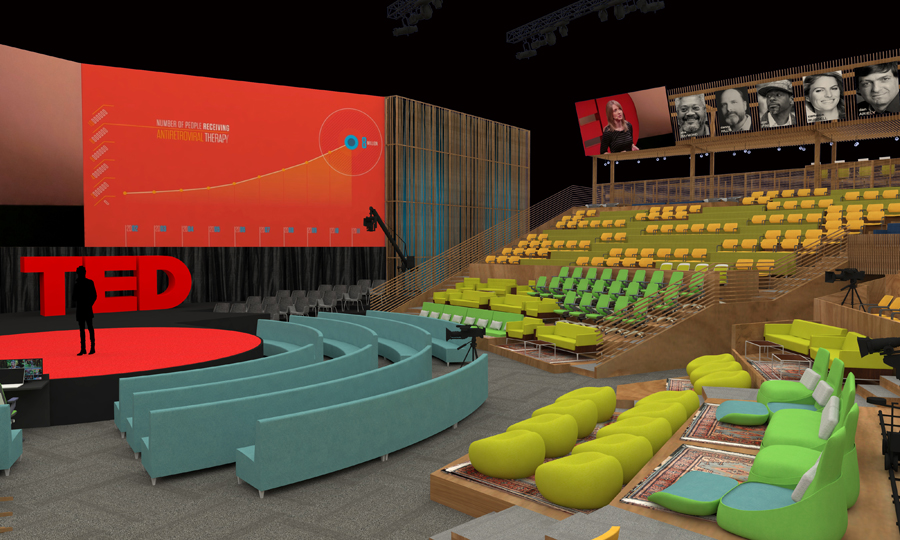
Step 3. Think about your presentation as a whole
Your presentation is a story. It should flow from start to finish, and you should understand the primary points you want to make along the way. Look for the “big opportunities” and use your slides to truly highlight them. Not every slide should “Wow!” Some should be supportive and lead up to your key points—just like scenes in a movie plot. If every slide (or every scene) is intense, nothing will stand out. Outlines, index cards or sticky notes can be helpful at the early stages when you’re planning the arc of your story.
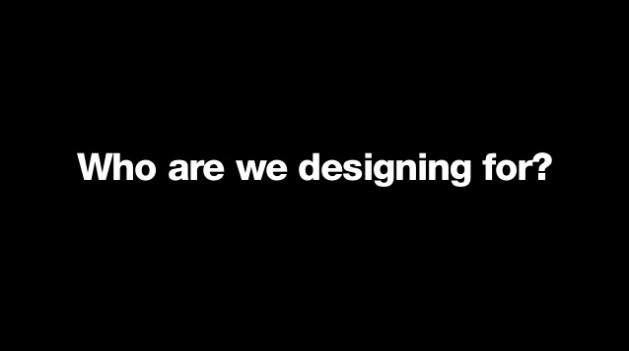
Step 4. One concept per slide (okay, maybe two)
To successfully make a point, you need your audience to be able to focus in and “get it.” So instead of asking a single slide to carry the load of relaying multiple concepts, put the second (or third or fourth) on their own slides. It can even make sense to relay a single concept across multiple slides. This allows the speaker to spend more time on it without losing momentum.

In some instances, you may be starting with a recycled slide your presenter happens to love—although you can see it’s relaying too many things. In such a case, ask the presenter to literally present the slide to you, and listen for the one (or maybe two) key messaging concepts they’re trying to relate. Build the new slide content to support those, and put everything else in the speaker notes.
Working with a client to distill a keynote’s story down to a few big, clarified points can be difficult work. But if we’re successful, the result is truly transformative. David Mack Co-founder, SketchDeck
Step 5. Minimalize
The slides are there to support your presenter—not to steal the show. The focus should be on speaker. Think single graphics and/or few words over phrase. Think phrase over sentence. Sentence over… (don’t even THINK about multiple sentences). You don’t want the audience to start reading, and stop listening.
The slide content is supporting the message, not relaying it. Everything on your slides should be meaningful. No placeholders, watermarks, headers or footers. If you haven’t determined this already, using your standard company presentation template probably isn’t a good idea. (Looking for an event or presentation specific presentation template? SketchDeck can help with that!)
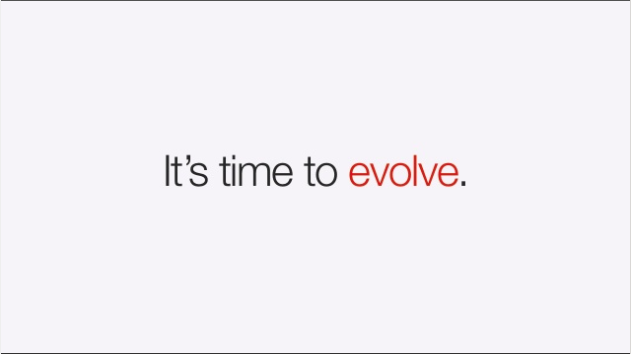
Step 6. Maintain top quality
This is a premium presentation, and it needs to look and feel that way. No grainy photos, watermarked stock images, family snapshots, placeholder text or clip art. Just. Don’t. Do it. This is a day for Tiffany’s, not Target.
Step 7. Consider motion
Videos and animation can add a different and engaging dimension to your presentation. If done well, they offer a level of cinematic drama that can enhance the magic of a live performance. But keep the previous steps in mind if you go this route. Every visual element needs a reason to be there. Everything must help tell the story.
Step 8. Get a great presenter
The reality is a speaker can make or break a presentation. A bad presenter can ruin a perfect presentation. And as much as it pains us to write this, a great presenter doesn’t really need slides (see Step 5 above). Therefore, if you’re presenting, practice—ideally in front of someone who will be brutally honest. You should also consider hiring a coach.
SketchDeck recommends taking the presentation to a small, controlled audience a week or so before the event to see how it delivers. Not only is it a great practice opportunity, it allows time for last minute adjustments.
And most importantly, hear feedback and adapt accordingly. If you’re not the presenter, ask whoever is to do the same. Great presenters are not born. It takes work, and the vast majority of that work is done before a speaker steps on stage.
It usually takes me more than three weeks to prepare a good impromptu speech. Mark Twain
The big day
The audience is rapt… pin drop silent. Elegant slides flip in perfect timing behind your delivery. You pause—at just the right point—confidently adjusting the cuffs of your black turtleneck.
“They’re mine,” you think. And you’re right.
Fired up to blow away your next audience? So are we. SketchDeck would love to partner with you to help make your next presentation TED Talk-worthy.
Additional resources
https://www.ted.com/talks/nancy_duarte_the_secret_structure_of_great_talks
https://synapsiscreative.com/5-best-slide-decks-tedx/
https://blog.ted.com/10-tips-for-better-slide-decks/

Rob Lewczyk
- Originally published on January 30, 2020
Redefine what's possible with SketchDeck.
Subscribe to our newsletter, redefine what’s possible with sketchdeck., related reading.

- After Dinner Speakers
- BAME Speakers
- Celebrity Speakers
- Comedian Speakers
- Conference Speakers
- Female Motivational Speakers
- STEM Speakers

- Motivational
- Mindfulness
- Gender & Equality
- Artificial Intelligence
- Mental Health
- Sustainability
- Business Strategy
Tips for Preparing and Delivering a Ted-style Talk
Master the art of delivering engaging TED-style talks with these essential techniques and tips. Captivate audiences, share innovation, and inspire change.
- Release Date: 02 October 2023
- Update Date: 15 March 2024
- Author: Speaker Agency
Crafting Your Story: How to Create a Ted Talk-Style Presentation
Ted talk essentials: structuring your presentation for impact, the art of storytelling: engaging your audience in a speech, rehearsing for success: techniques for polished talk delivery, making your speech memorable: adding a personal touch.

In a world where ideas have the power to shape perspectives and ignite change, delivering a TED-style Talk has become a platform for sharing innovation, passion, and inspiration. If you're aiming to stand on the iconic red circle or simply want to infuse TED Talk elements into your presentations. This guide equips you with essential insights to craft and deliver compelling talks that resonate with audiences.
What is TED short for? TED stands for Technology, Entertainment, and Design, three major categories that together are reshaping our planet. A TED conference, however, is even more comprehensive, exhibiting significant findings and concepts from all fields and examining their connections. Graduate students and psychologists are frequently asked to address audiences.
Whether it's to lead a meeting, make a presentation at a conference, or give a talk in the neighborhood, some people are more naturally gifted at public speaking than others. Additionally, there are several classic traps to avoid. Such as coming across as chaotic. Or focusing on your notes instead of your audience.
Regardless of how experienced you are in public speaking, there are some highly powerful tactics to employ when giving speeches that are interesting and engaging. Try this advice on how to give a TED-style talk the next time you have a speaking engagement:
Discover Your Passion and Expertise
Start by identifying subjects that truly ignite your passion. Consider your personal experiences, interests, and areas where you possess expertise. Reflect on what topics you could talk about with enthusiasm and authenticity.
Identify a Thought-Provoking Angle
Look for an angle or perspective within your chosen topic that challenges norms, sparks curiosity, or addresses an unexplored aspect. TED Talks often thrive on presenting new viewpoints that intrigue the audience and stimulate their thinking.
Connect with Your Audience's Needs
Consider what matters to your audience and how your idea can address their needs or concerns. Successful TED Talks resonate with people's emotions, experiences, and aspirations. Connect your idea to a universal theme that everyone can relate to.
Craft a Clear and Impactful Message
Condense your idea into a concise and memorable message. What is the core takeaway you want your audience to remember? Craft a message that is easy to understand and resonates deeply, leaving a lasting impact.
Tell a Personal and Compelling Story
Weave personal anecdotes, real-life experiences, or relatable stories into your talk. These narratives humanize your idea and make it more relatable. Sharing your own journey adds authenticity and creates an emotional connection with the audience.

Structuring your TED Talks for impact is crucial to engaging your audience and effectively conveying your message. Here is a TED-style guide to help you structure your presentation:
1. Start with a Captivating Hook
Begin your talk with a compelling hook that grabs the audience's attention. This could be a thought-provoking question, a surprising fact, a powerful quote, or a relatable anecdote. A solid introduction establishes the tone for the remainder of your presentation.
2. Introduce Your Idea Clearly
After the hook, introduce your idea in a concise and straightforward manner. Clearly state the main point you'll be addressing throughout your talk. Your audience should understand the essence of your idea from the beginning.
3. Build a Logical Flow
Organize your content in a logical sequence. Each point should naturally lead to the next, creating a smooth flow of information. Use transitional phrases to guide your audience through your talk and connect various segments.
4. Support with Stories and Examples
Incorporate relevant stories, examples, and anecdotes that illustrate and support your idea. Personal experiences and real-life situations resonate with the audience, making your content more relatable and engaging.
5. End with a Memorable Conclusion
Summarize your main points and reiterate the core message you want your audience to take away. Conclude with a call to action, leaving the audience with something to think about or inspiring them to make a change based on your idea.
Amy TEZ , Frederik Haren , Aisha Iqbal, Jasper Taylor , Gareth Davies , Dominic Colenso , and Nikki Dean all have one thing in common. They are people who inspire the world through their gift of glib and structured storytelling. Practice your delivery to maintain a confident and engaging presence on stage, enhancing the overall impact of your TED-style Talk.

Absolutely, engaging your audience is essential for a successful speech. Here are five detailed points to help you captivate your audience effectively:
1. Connect with a Compelling Opening
Start with an attention-grabbing hook that piques curiosity. Use a surprising fact, a thought-provoking question, a relevant anecdote, or a powerful quote to immediately draw your audience into your speech.
2. Tell Relatable Stories
Weave relatable stories and personal experiences into your speech. Storytelling humanizes your content and makes it more memorable. Share narratives that your audience can connect with emotionally.
3. Use Interactive Elements
Engage your audience by involving them in your speech. Pose rhetorical questions that encourage them to think, ask for a show of hands, or incorporate brief audience interactions that require participation.
4. Vary Your Tone and Pace
Keep your audience engaged by using vocal variety. Alternate between a slower pace for emphasis and a faster pace for excitement. Use pauses strategically to build suspense and let key points sink in.
5. Visuals and Props
Use visuals to make your speech more compelling, such as slides or props. Visual aids can reinforce your points and provide a visual break for the audience, keeping their interest alive.
Here are five key techniques on how to create a ted talk style presentation and delivery:
1. Practice and Rehearse
Dedicate time to practicing your speech multiple times. Rehearsing helps you become familiar with the content and enhances your confidence in delivering it.
2. Use Effective Body Language
Employ open and confident body language. Make purposeful gestures, maintain eye contact with the audience, and stand with a straight posture.
3. Control Pace and Pauses
Speak at a steady pace that allows the audience to absorb your words. Use well-timed pauses to emphasize points and let the information sink in.
4. Vary Vocal Tone and Volume
Keep your audience engaged by varying your vocal tone, pitch, and volume. This adds depth to your delivery and maintains interest.
5. Minimize Fillers and Articulate
Avoid overusing filler words like "um" and "uh." Enunciate clearly and articulate your words, ensuring your speech remains coherent and easily understandable.
Infusing a personal touch into your TED-style Talk involves intertwining your own experiences and emotions with the topic at hand. By sharing relatable anecdotes, you bridge the gap between the stage and the audience, forging a genuine connection. Reveal moments of vulnerability, illustrating challenges you've overcome and lessons learned, to evoke empathy and authenticity. Additionally, expressing your passion for the subject creates an infectious enthusiasm that resonates with listeners. When your personal journey intersects with the broader theme, your talk becomes more than a presentation—it becomes a shared exploration of ideas and emotions.
At the same time, it's crucial to strike a balance. The personal touch should enhance, not overshadow, your talk's central message. Every personal element should contribute to the audience's understanding and emotional engagement, elevating your speech from a mere presentation to a relatable, memorable, and impactful experience.
What is the best way to prepare a TED Talk?
Preparing a TED Talk involves understanding your idea's essence, crafting a compelling narrative, and rehearsing until you're comfortable and confident. It's also crucial to adhere to the TED-style Talk format and guidelines, ensuring your content aligns with their mission of spreading innovative ideas.
What are the preparations needed before presenting a TED Talk?
Before stepping onto the TED stage, meticulously refine your idea, craft a compelling story, and practice your delivery to achieve a seamless and impactful presentation. Familiarize yourself with the stage, lighting, and technology to ensure a smooth experience on the big day.
What are the top 5 elements of an engaging TED Talk?
An engaging TED-style Talk comprises a captivating opening, a clear and structured idea, relatable storytelling, authentic emotional connection, and a thought-provoking conclusion. These elements work together to create a lasting impact on your audience.
What are the steps in the TED Talk process?
The TED Talk process involves idea formulation, thorough research, crafting a compelling narrative, practice, refinement, and finally, delivering the talk with confidence and authenticity. Each step contributes to creating an impactful and memorable presentation.
Remember, making an effective TED-style Talk involves a balance of structure, authenticity, and engagement. This guide equips you with the tools to captivate your audience, ignite conversations, and leave an indelible mark on the world of ideas.
Also read: How To Become A Better Public Speaker?

How to give more persuasive presentations: A Q&A with Nancy Duarte
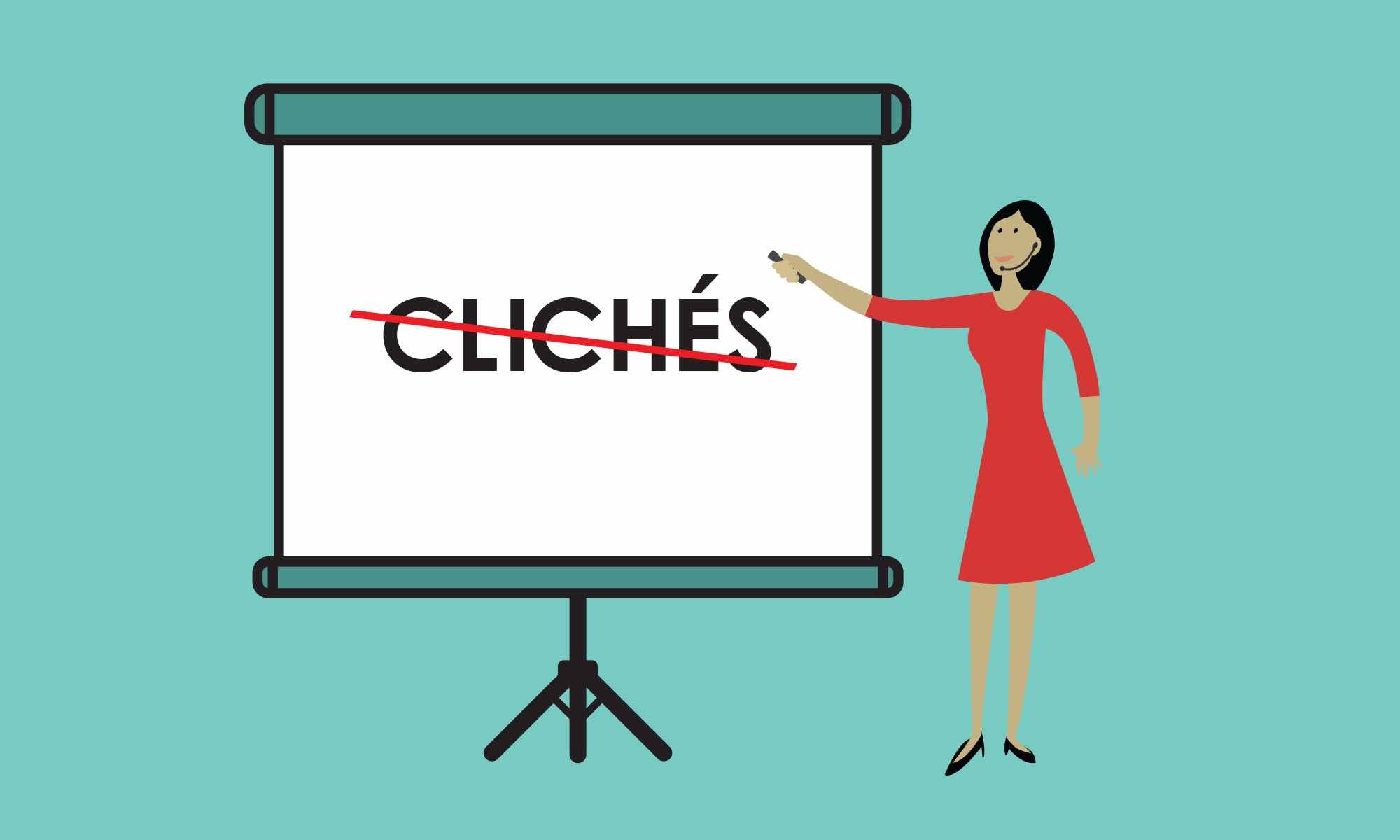
Stepping onto the TED or TEDx stage — or speaking in front of any group of people, for that matter — is truly nerve-wracking. Will you remember everything you wanted to say, or get so discombobulated that you skip over major points? Will the audience be receptive to your ideas, or will you notice a guy in row three nodding off to sleep?
Presentation expert Nancy Duarte , who gave the TED Talk “ The secret structure of great talks ,” has built her career helping people express their ideas in presentations. The author of Slide:ology and Resonate , Duarte has just released a new book through the Harvard Business Review: The HBR Guide to Persuasive Presentations .
What would you say are the three keys to giving a great presentation?
The number one thing, I think, is to be audience-centric. To take the time to think through who the audience is and develop all your material from a place of empathy toward them. You’re asking them to adopt your idea, which means they may have to abandon a belief they hold as true — and that’s hard. So, know your audience — take a walk in their shoes. What keeps them up at night? How are they wired to resist your message? Most presenters are consumed with preparing their content rapidly, which makes the material about their own narrow perspective. By flipping that paradigm to an audience-centric approach, your material will resonate and the audience can feel a deeper connection to you and your material.
Number two, you need to understand your role in the presentation. So many people feel like they’re the central figure — kind of like the hero of the story — because they’re the one talking the most. But in reality, your role is that of a mentor — you should be giving the audience a magical gift or a special tool, or helping them get unstuck in some way. You have to defer to your audience. When you put your idea out there for an audience to contend with — if they reject your idea, your idea will die. You have to think of it as, “The speaker needs the audience more than the audience needs the speaker.” Then you’ll start to approach a material with your audience in mind – you’ll have more of a stance of humility than one of arrogance. That will help you create the kind of movement needed to get your idea to spread.
And then the third thing — wrap your content in story. A story serves like the sugarcoating on the outside of a pill in some ways — it just makes it go down easier. If you look at preliterate generations for thousands and thousands of years, stories would pass down for generation after generation after generation — and stay almost completely intact. Yet, a lot of people can’t remember the last presentation they sat through. So, using principles of story — the tension and release that happens in a story — that’s what will help persuade the audience toward your idea.
What do you feel like you learned from giving your own TED Talk?
I learned so much. Being the “Presentation Lady,” I knew I couldn’t suck at it. The hardest part was getting [my talk] to fit within this finite amount of time. So I trimmed and trimmed, keeping in mind that you still have to nail why this is important to the audience. I had a person coach me and point out places where I could trim. “You took too long here, and that made this part of emphasis too long.” I worked with the timer counting up until I knew I was within the time window — then what I did was work with the timer counting down so I’d know, “When I’m a fourth of the way through, I should be on this slide. When I’m halfway through, I need to be on this slide.” I created markers in my mind so I would know how I was running on time. Sure enough, I finished the talk and I had six seconds left on the clock.
It was a great experience for me because I hadn’t gone through it myself. I’d coached people through it but — wow — to actually be a victim was interesting. I learned the power of rehearsing. If you rehearse really, really, really well — it looks improvisational. Some people rehearse to a point where they’re robotic, and they sound like they have memorized their presentation and didn’t take it to the next level. Going from sounding memorized and canned to sounding natural is a lot of work.
So, the classic advice for stage fright is to imagine the audience in their underwear. What do you recommend people do to calm their nerves?
I don’t usually get nervous, but when I got on [the TED] stage, I was nervous because it’s pretty high stakes. I recommend doing some breathing exercises — breathe in as deep as you can, and then take a couple more big gasps. Then, release it really slowly. That calms my heart down. But my favorite piece of advice isn’t my own — it’s from a guy named Nick Morgan. He said, “What you need to do right before you walk on stage is think of someone that you love dearly.” Doing that, I felt the chemistry in my whole body change. My shoulders relaxed and my heart melted. That feeling of affection makes your body calm itself down. That’s a really great way to stop stage fright.
What is the best way to start creating a presentation?
My best advice is to not start in PowerPoint. Presentation tools force you to think through information linearly, and you really need to start by thinking of the whole instead of the individual lines. I encourage people to use 3×5 note cards or sticky notes — write one idea per note. I tape mine up on the wall and then study them. Then I arrange them and rearrange them — just work and work until the structure feels sound. And from that sound structure, you start to fill it in using a presentation tool.
[For visuals], I think people tend to go with the easiest, fastest idea. Like, “I’m going to put a handshake in front of a globe to mean partnership!” Well, how many handshakes in front of a globe do we have to look at before we realize it’s a total cliche? Another common one — the arrow in the middle of a bullseye. Really? Everyone else is thinking that way. The slides themselves are supposed to be a mnemonic device for the audience so they can remember what you had to say. They’re not just a teleprompter for the speaker. A bullseye isn’t going to make anyone remember anything. Don’t go for the first idea. Think about the point you’re trying to make and brainstorm individual moments that you’re trying to emphasize. Think to the second, the third, the fourth idea — and by the time you get to about the tenth idea, those will be the more clever memorable things for the audience.
One thing that is really different about giving a TED Talk is the fact that you know it will be filmed. How do you think about the difference between live presentations and ones that will exist on video?
On stage, it feels really awkward to do large movements because — normally in life — we’re talking to someone in a more intimate setting and moving your arms really big feels melodramatic. But on the stage, you have to move your body in really big gestures. It feels awkward at first if you’re not used to it, so you have to kind of close your eyes and get used to it. Say things and move largely. Take big bold steps forward, big bold steps backward. You have this grand stage and people don’t use the space enough. I think one of the great things that Jill Bolte Taylor did was how she used her body. Her arms stretched all the way up when she talked about nirvana. Then she when she talks about her whole soul feeling constricted, she brings her hands down and folds her arms down in front of her. She’s using her body as a prop. That’s an important way to create meaning.
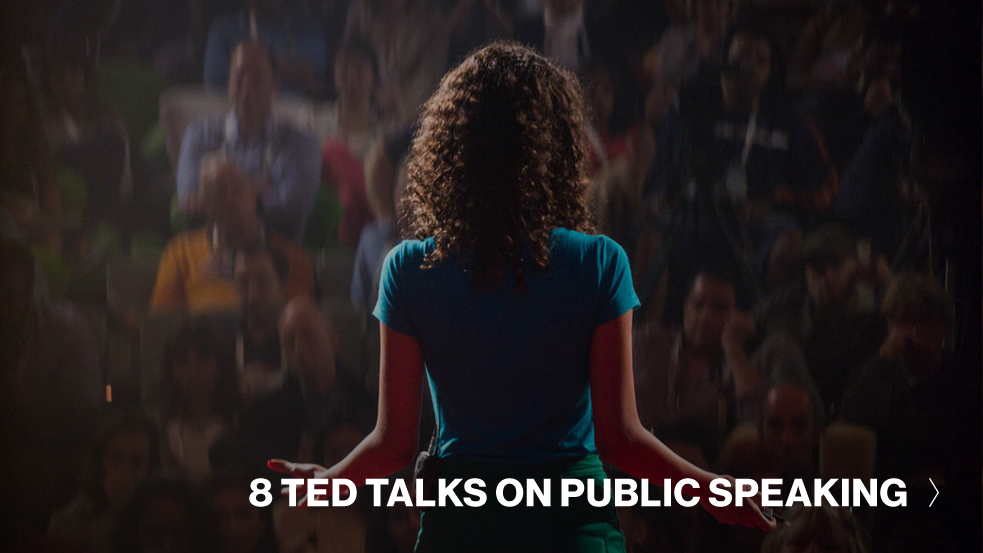
Also, with video, a tech rehearsal is important. Your audience on video is exponentially larger than the people in the room. So by familiarizing yourself with the cameras, you can at least look in that general direction. You know how you’re supposed to look around the audience — look and hold for five seconds, look and hold for five seconds? You should look at the camera as if it’s a human. Get used to seeing that circular lens as a face. Feel like it’s a person you’re talking to, because that audience on camera needs to feel like they’re there and that you’re looking right at them.
To me, presentations are the most powerful device. You can’t really name a movement that didn’t start with the spoken word. TED was once this exclusive, amazing event where ideas were exchanged, but you’ve moved to treating presentations as a media type. You guys have been so refined at it, that what it’s done is created a movement. What TED has done is made a platform for introverts, for scientists, for inventors — to share their ideas in a way that’s clear and appeals to a broad audience so that their ideas spread and get adopted. It’s completely changed how people present. It’s created this desire to be excellent in communication.
When you look at even how businesses communicated in the ’30’s, ’40’s and ’50’s — they were so much clearer and well-crafted. I recently went to the Stanford Library and I got a bunch of old GE Board meetings from, like, 1957. And I thought, “These are so beautiful!” Their presentations referenced history, they quoted things, they crafted their words in such a beautiful way. Then PowerPoint entered into the mix and suddenly there wasn’t any desire to craft anymore. I think TED Talks have brought the desire for the craft back.
Your new book is from the Harvard Business Review. Is it intended for someone who is in business, or for anyone?
All of my books are for anyone who has an idea that they need to communicate! I loved working with Harvard Business Review and I think because of the publisher, business professionals may be more interested in this book. But anyone with an idea can benefit from it. It’s a guidebook, so that people can think, “Oh, I need to know how to do this specific thing. I’m going to go get this book and find that one thing.”
Want more advice on giving talks? Our curator Chris Anderson is writing the official TED guide to public speaking —to be published by Houghton Mifflin Harcourt in spring 2016. Titled Talk This Way! , it will be packed with insights on what makes talks work.
- Subscribe to TED Blog by email
Comments (58)
Pingback: How to give a great speech (Hint: be authentic) « Broadside
Pingback: Before You Speak, Learn To See | Echo Hub » Posts
Pingback: Links of the Week: Week of Nov 5-11 « Creating Communication
Pingback: TED Blog | How to give a persuasive presentations: A Q&A with Nancy Duarte « Simpsonville New Home News
Pingback: TED Blog | How to give a persuasive presentations: A Q&A with Nancy Duarte « arnoneumann
- SUGGESTED TOPICS
- The Magazine
- Newsletters
- Managing Yourself
- Managing Teams
- Work-life Balance
- The Big Idea
- Data & Visuals
- Reading Lists
- Case Selections
- HBR Learning
- Topic Feeds
- Account Settings
- Email Preferences
How to Give a Killer Presentation
- Chris Anderson

For more than 30 years, the TED conference series has presented enlightening talks that people enjoy watching. In this article, Anderson, TED’s curator, shares five keys to great presentations:
- Frame your story (figure out where to start and where to end).
- Plan your delivery (decide whether to memorize your speech word for word or develop bullet points and then rehearse it—over and over).
- Work on stage presence (but remember that your story matters more than how you stand or whether you’re visibly nervous).
- Plan the multimedia (whatever you do, don’t read from PowerPoint slides).
- Put it together (play to your strengths and be authentic).
According to Anderson, presentations rise or fall on the quality of the idea, the narrative, and the passion of the speaker. It’s about substance—not style. In fact, it’s fairly easy to “coach out” the problems in a talk, but there’s no way to “coach in” the basic story—the presenter has to have the raw material. So if your thinking is not there yet, he advises, decline that invitation to speak. Instead, keep working until you have an idea that’s worth sharing.
Lessons from TED
A little more than a year ago, on a trip to Nairobi, Kenya, some colleagues and I met a 12-year-old Masai boy named Richard Turere, who told us a fascinating story. His family raises livestock on the edge of a vast national park, and one of the biggest challenges is protecting the animals from lions—especially at night. Richard had noticed that placing lamps in a field didn’t deter lion attacks, but when he walked the field with a torch, the lions stayed away. From a young age, he’d been interested in electronics, teaching himself by, for example, taking apart his parents’ radio. He used that experience to devise a system of lights that would turn on and off in sequence—using solar panels, a car battery, and a motorcycle indicator box—and thereby create a sense of movement that he hoped would scare off the lions. He installed the lights, and the lions stopped attacking. Soon villages elsewhere in Kenya began installing Richard’s “lion lights.”
- CA Chris Anderson is the curator of TED.
Partner Center
.css-1qrtm5m{display:block;margin-bottom:8px;text-transform:uppercase;font-size:14px;line-height:1.5714285714285714;-webkit-letter-spacing:-0.35px;-moz-letter-spacing:-0.35px;-ms-letter-spacing:-0.35px;letter-spacing:-0.35px;font-weight:300;color:#606F7B;}@media (min-width:600px){.css-1qrtm5m{font-size:16px;line-height:1.625;-webkit-letter-spacing:-0.5px;-moz-letter-spacing:-0.5px;-ms-letter-spacing:-0.5px;letter-spacing:-0.5px;}} Best Practices The #1 rule for improving your presentation slides
by Tom Rielly • May 12, 2020

When giving presentations, either on a video conference call or in person, your slides, videos and graphics (or lack of them) can be an important element in helping you tell your story or express your idea. This is the first of a series of blog posts that will give you tips and tricks on how to perfect your visual presentations.
Your job as a presenter is to build your idea -- step-by-step -- in the minds of your audience members. One tool to do that is presentation graphics, such as slides and videos.
Why graphics for your presentation?
A common mistake is using slides or videos as a crutch, even if they don’t actually add anything to your presentation. Not all presentations need graphics. Lots of presentations work wonderfully with just one person standing on a stage telling a story, as demonstrated by many TED Talks.
You should only use slides if they serve a purpose: conveying scientific information, art, and things that are hard to explain without pictures. Once you have decided on using slides, you will have a number of decisions to make. We’ll help you with the basics of making a presentation that is, above all, clear and easy to understand. The most important thing to remember here is: less is more.
Less is so much more
You want to aim for the fewest number of slides, the fewest number of photos, the fewest words per slide, the least cluttered slides and the most white space on your slides. This is the most violated slide rule, but it is the secret to success. Take a look at these examples.

As you can see in the above example, you don’t need fancy backgrounds or extra words to convey a simple concept. If you take “Everything you need to know about Turtles”, and delete “everything you need to know about” leaving just “turtles”, the slide has become much easier for your audience to read, and tells the story with economy.

The above example demonstrates that a single image that fills the entire screen is far more powerful than a slide cluttered with images. A slide with too many images may be detrimental to your presentation. The audience will spend more mental energy trying to sort through the clutter than listening to your presentation. If you need multiple images, then put each one on its own slide. Make each image high-resolution and have it fill the entire screen. If the photos are not the same dimensions as the screen, put them on a black background. Don’t use other colors, especially white.

Your slides will be much more effective if you use the fewest words, characters, and pictures needed to tell your story. Long paragraphs make the audience strain to read them, which means they are not paying attention to you. Your audience may even get stressed if you move on to your next slide before they’ve finished reading your paragraph. The best way to make sure the attention stays on you is to limit word count to no more than 10 words per slide. As presentation expert Nancy Duarte says “any slide with more than 10 words is a document.” If you really do need a longer explanation of something, handouts or follow-up emails are the way to go.
Following a “less is more” approach is one of the simplest things you can do to improve your presentation visuals and the impact of your presentation overall. Make sure your visuals add to your presentation rather than distract from it and get your message across.
Ready to learn more about how to make your presentation even better? Get TED Masterclass and develop your ideas into TED-style talks.
© 2024 TED Conferences, LLC. All rights reserved. Please note that the TED Talks Usage policy does not apply to this content and is not subject to our creative commons license.

< Go back to Login
Forgot Password
Please enter your registered email ID. You will receive an email message with instructions on how to reset your password.

Present TED-style: Six Things TED Presenters Do That You Can Copy And Use In Your Next Presentation
It’s a harsh reality of the digital age: capturing and maintaining another person’s attention is becoming increasingly difficult. While there is minimal factual information on the typical person’s attention span during a presentation, savvy presenters are well aware that audiences are an impatient lot. As a result, it is more vital than ever for every one of us to think carefully about how we convey information.
Certain types of business presentations provide a chance for executives to demonstrate their knowledge while also providing audience members with useful and exciting information. TED and TEDx talks (which are organized locally and independently) have come to symbolize the peak of high-caliber business presentations.
- What is a TED Talk?
- Understand Your Audience
- Explore The Venue Where You Will Be Delivering Your Presentation
- Connect With Your Audience
- Explain One Concept Per Slide
- Keep The Presentation Content Precise
- Inspire Your Audience
- A Few TED Style Template Examples
What is a TED Talk?
TED Talks are brief, powerful presentations of ideas presented by experienced speakers at TED and TEDx conferences across the world. What distinguishes TED Talks is that they are generally recognized as highly impactful, motivating, inspiring and insightful. These presentations are easily digestible due to their brief nature. Their carefully selected speakers give them credibility.
A TED Talk is 18 minutes long, a duration set by TED organizers based on neuroscience as well as strategy. They recognized that 18 minutes was long enough for a speaker to flesh out a topic while remaining short enough for a listener to take in, assimilate, and understand all of the crucial information.
The concept of TED Talks was developed in 1984 during the inaugural TED conference. The TED acronym refers to the initial focus of these lectures, which was Technology, Entertainment, and Design.
The first TED conference established a good tone, with talks on the compact disc (a novel idea at the time), the e-book, and other cutting-edge technical concepts. The second TED conference was conducted in 1990 and was so well received that it became an annual event.
6 Tips Inspired By Ted Talks To Give A Killer Presentation
TED Talks are so well-done that they almost symbolize authority and perfection. Let’s look at what makes them so appealing from an audience’s viewpoint.
1. Understand Your Audience
This is critical for maximizing the effectiveness of any communication. To effectively communicate your “big idea,” you must first grasp what your audience understands and cares about. Then customize your presentation accordingly.
If you’re giving a presentation to a new or relatively unfamiliar audience, there are several quick ways to collect information, such as researching and reading a pertinent Reddit discussion or having a quick interaction with someone more knowledgeable.
Most TED speakers do substantial research about their audience, sometimes calling them out by name. This makes them fully grounded in the reality of the stage they are standing on.
2. Explore The Venue Where You Will Be Delivering Your Presentation
As a thumb rule, the background of your slides should match the room in which you’re speaking. In TED talks, typically, large arenas are frequently used. The hall is darkened so that the visual focus is on what’s on stage.
Matching the backdrops of your slides to the details of your location can be quite successful, drawing attention to the presentation’s content rather than what is happening around
Keep the viewing angles and distance of the audience in consideration as well. You want people to be on the edge of their seats, but not because they’re squinting to make out your tiny text.
3. Connect With Your Audience
It’s tempting to imagine that the value of a TEDx talk is in the performance. After all, TED talks are regarded for being both motivating and engaging, and TED presenters are at the pinnacle of their profession. However, focusing on the performance overlooks what truly distinguishes these presentations: the connection.
Consider your favorite TED talks and why you hold them in such high regard. I’m guessing your solution has something to do with the speaker’s passion, conviction, and ability to connect with their audience. This is something that successful corporate presentations have in common with TED-style talks. So, how can you ensure that your next presentation connects with your audience?
Creating a connection involves many aspects- an important one is an authenticity. An authentic business presentation is not a spontaneous act. It is anything but. It takes careful thinking. Authenticity necessitates dedication to writing and editing until the content is perfect. Delivery is important in addition to content. Authentic presenters, in addition to their content, pay close attention to how they physically come across to their audience: their facial gestures, hand movements- everything is in focus.
With proper preparation, they reach a point when they are able to speak to the audience as if they were chatting to a dear friend over a favorite beverage; the real them shines through. This level of authenticity generates connection, trust and leaves a lasting impact on your audience.
Yet, it is not necessary to have everything flawless for a good presentation. It all comes down to being prepared, wanting to connect, and sharing frankly with people. Remember to practice aloud to get there!
4. Explain One Concept Per Slide
To effectively deliver a message, your audience must be able to focus on and “understand it.” Instead of relying on a single slide to convey many concepts. It may even be appropriate to spread a single notion across numerous presentations. This permits the speaker to focus on it for a longer period without losing momentum.
From an audience’s perspective, less is more. If you need a reference for yourself, use the speaker notes by all means but keep the slide content to a minimum so the audience can focus and comprehend.
5. Keep The Presentation Content Precise
The purpose of the slides is to assist the presenter, not to steal the thunder from the presenter. The speaker should be the center of attention. Consider using single visuals and/or a few sentences rather than phrases. Consider the phrase over the sentence. You don’t want your audience to begin reading and then quit listening.
The content should be supported by the slide content rather than being relayed by it. Everything on your slides should have a purpose. There will be no placeholders, watermarks, headers, or footers without good reason. If you haven’t already decided, utilizing your normal business presentation template is generally not a smart choice.
6. Inspire Your Audience
Finally, as a corporate communicator, you may not be as big a known authority on your subject as a TED speaker. Yet you can get attention with your clarity, drive, and enthusiasm.
Regardless of the topic or how many times you’ve given a presentation on it, it’s critical that you express your thoughts with excitement. Keep in mind that your audience will pick up on your cues. You can bet your audience will be bored if you appear uninterested. To present a memorable message, you must demonstrate your passion for the subject.
Once again, this best practice is about cultivating the mentality that will enable you to be a good presenter. Your passion for your subject fuels an interesting, real delivery that will resonate with listeners.
A Few TED Style Template Examples:

Lamp Business Strategy
Source: Lamp Business Strategy by SlideUpLift
30 60 90 Day Plan
Source: 30 60 90 Day Plan by SlideUpLift

Corporate Highlights
Source: Corporate Highlights by SlideUpLift
The Bottom Line
Some people find public speaking easy, while others find it difficult. You can create a great impact with the correct framework, planning, slides, and practice. The world is inspired by TED Talks. They are a source of inspiration for our most creative and innovative minds.
TED has taught us many lessons: For example, Sharing data and numbers doesn’t have to be boring, Storytelling has and will always work, Once the lights are on, it is all about the presenter and their connection with the audience. Nothing else matters. So let your genuineness and enthusiasm flow through as you present. People will feel inspired and educated.
Use these TED talks to improve your presenting skills and become interested in sharing your knowledge. Be brave and speak up. In case you are looking for TED Style templates, check out the vast collection of free PowerPoint templates to get started. Your presentation will be worth sharing as well.
Table Of Content
Related posts from the same category.

20 Oct, 2022 | SlideUpLift
SlideUpLift Fixes Gaps In Google Slides To Make Your Next Presentation a Breeze
Google Slides is an excellent tool for creating corporate presentations. After all, Google Slides is free to use; there is no software to install, no data loss, and it includes
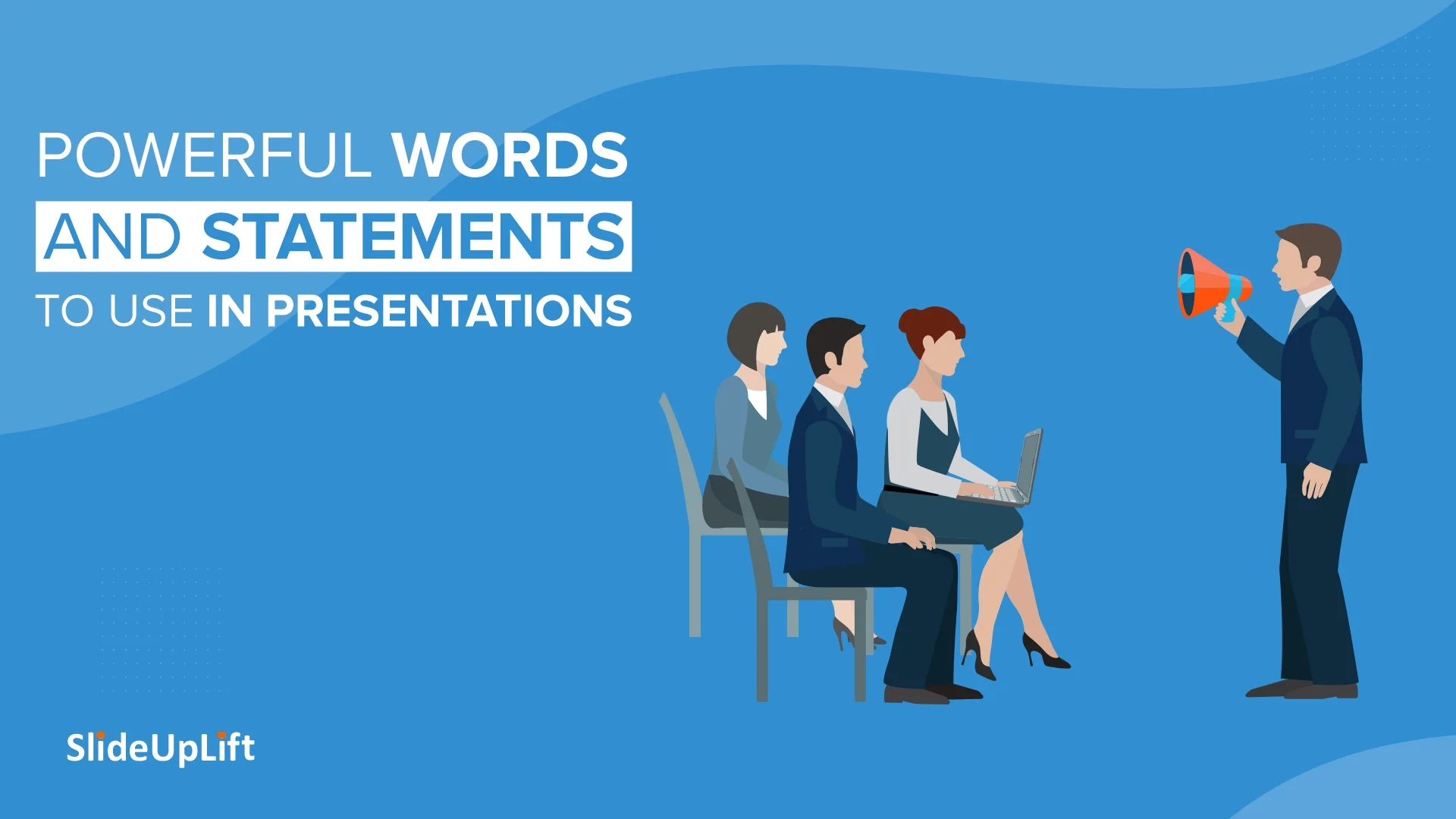
1 Feb, 2022 | SlideUpLift
Powerful Words and Statements To Use In Presentations
No matter what industry you work in, you will have to deliver a presentation at some point. At first, this may be quite nerve-racking, if not simply terrifying. The good

12 Jun, 2018 | SlideUpLift
Microsoft PowerPoint Shortcuts That You Didn’t Know
PowerPoint is nothing short of a phenomenal tool when it comes to building business presentations. If you have been a regular PowerPoint user, you would already know that it has
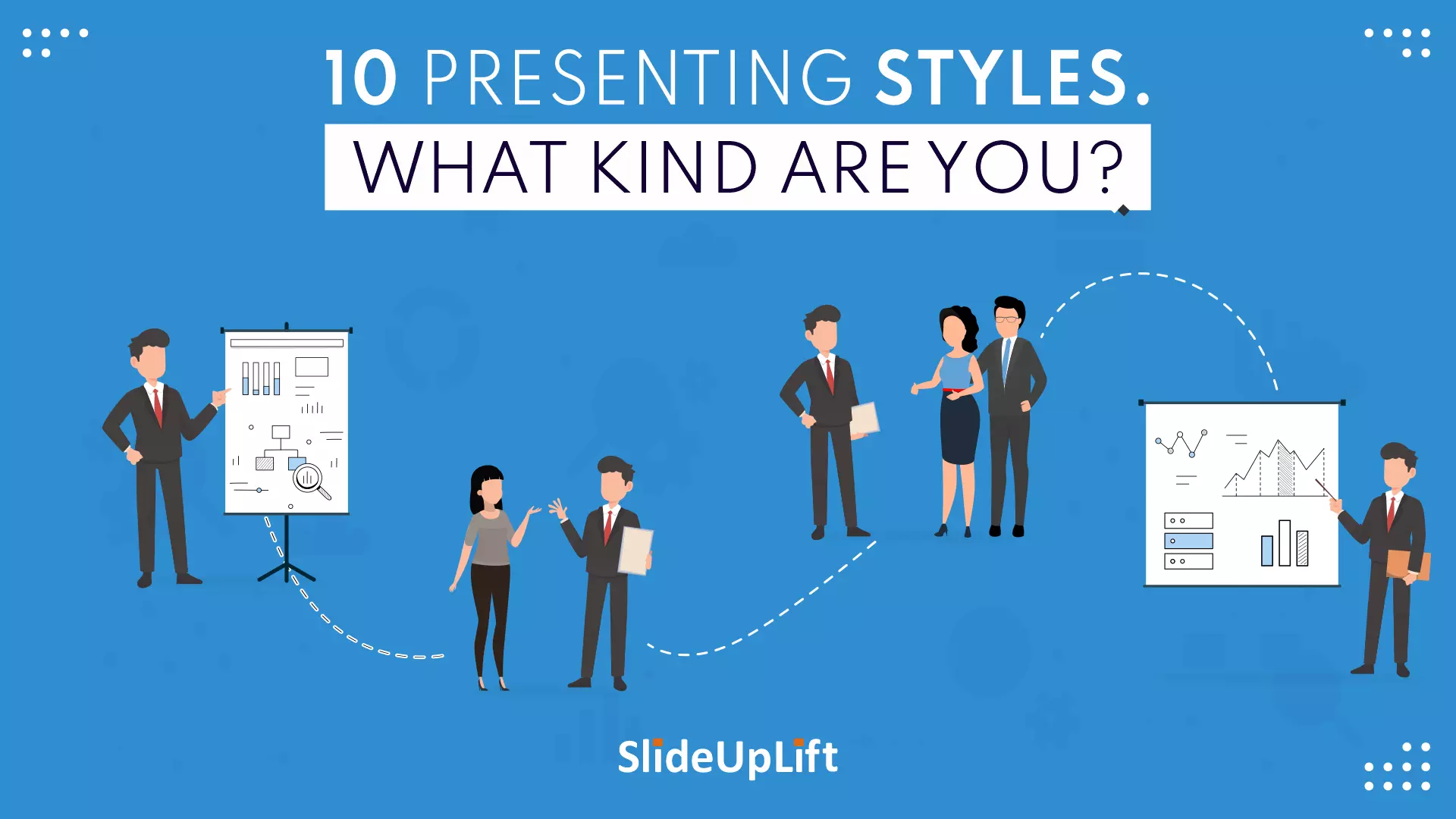
8 Feb, 2022 | SlideUpLift
Ten Presenting Styles : What Kind Are You?
Do you feel nervous when it comes to public speaking? Don’t worry; you’re not alone. Do you know that according to research, one of the biggest phobias in 2014 was

14 Oct, 2022 | SlideUpLift
How To Create Your Perfect Webinar Presentation
Webinars are becoming an increasingly important tool for businesses to connect directly with their customers — to educate and inform, maintain relationships and even build a brand. They're also excellent

20 Aug, 2021 | SlideUpLift
Storytelling Tips to Change the Way You Present Ideas
A piece of oft-given advice surrounding making presentations is that in order to engage an audience, your presentation and speech need to have a narrative. And we wholeheartedly agree with

8 Jun, 2023 | SlideUpLift
How To Present Data In The Best Way?
Having accessible means to analyze and understand data is more vital than ever in our increasingly data-driven environment. After all, employers increasingly value people with strong data abilities, and every

16 Nov, 2022 | SlideUpLift
9 Best Presentation Ideas That Your Viewers Will Adore
There used to be a time of simplicity - an era of no notifications, vibrating phones, or social media pings- when things were done one at a time. Today is
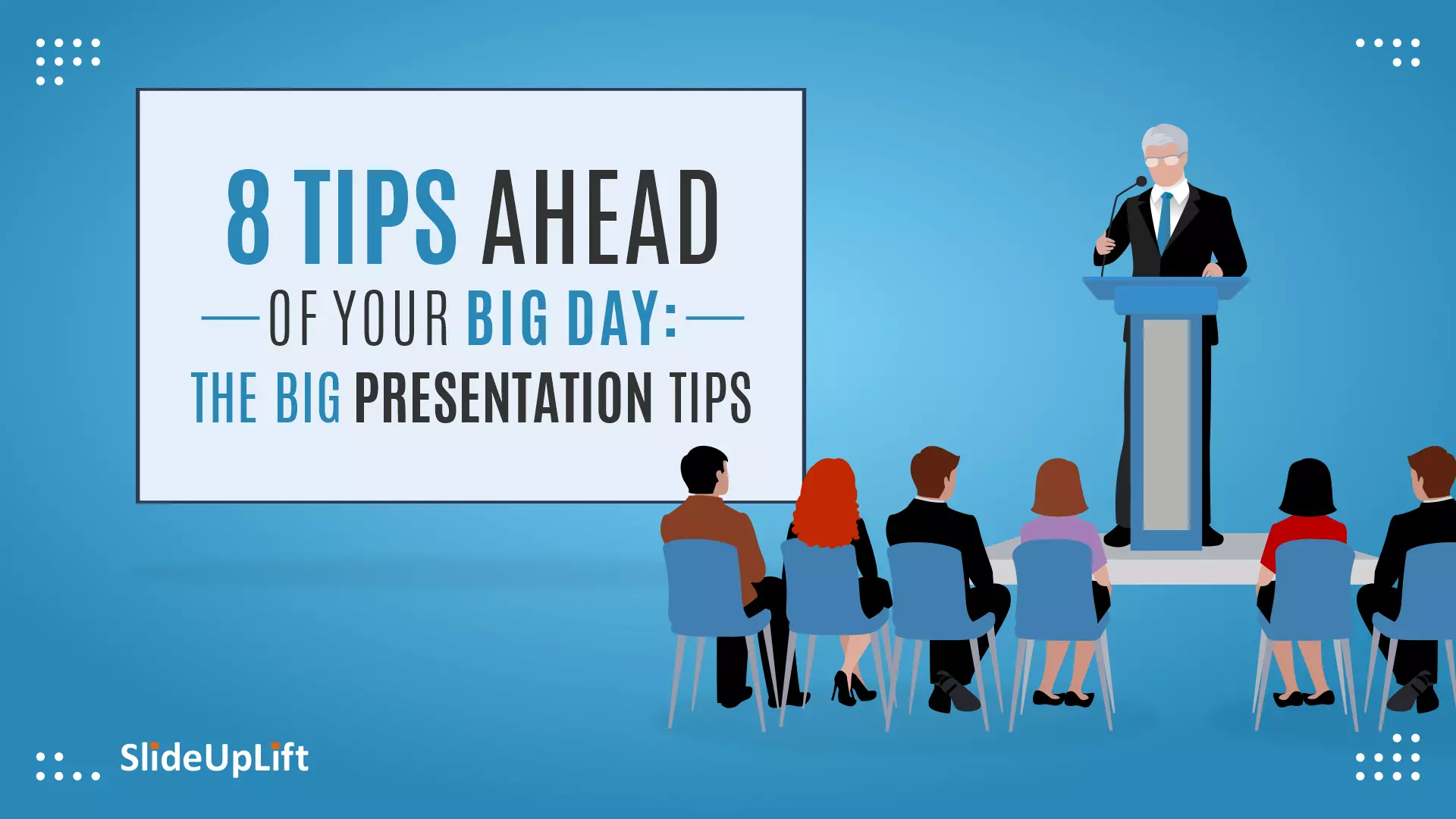
3 Feb, 2022 | SlideUpLift
8 Tips Ahead Of Your Big Day: The Big Presentation Tips
Are you preparing for your next big presentation? Aside from preparing, writing, and practicing your speech, there are certain other actions you should do to ensure you are truly prepared

11 May, 2023 | SlideUpLift
6 Types of Presentation You Must Know (+ Tips)
Are you tired of giving the same old boring presentation, using the same format every time? Have you ever wondered if there are different types of presentations to achieve different
Forgot Password?
Privacy Overview
Necessary cookies are absolutely essential for the website to function properly. This category only includes cookies that ensures basic functionalities and security features of the website. These cookies do not store any personal information
Any cookies that may not be particularly necessary for the website to function and is used specifically to collect user personal data via ads, other embedded contents are termed as non-necessary cookies. It is mandatory to procure user consent prior to running these cookies on your website.

7 TED Talks on how to improve your presentations

It’s a hard truth of the digital age: Capturing and keeping another person’s attention is getting more difficult. While the empirical evidence on the average person's attention span during a presentation is limited, the phrase "death by PowerPoint" rings all too true. IT leaders know from experience that audiences lack patience for ineffective speakers. That’s why it’s more important than ever for all of us to be thoughtful about how to deliver information.
[ Which IT roles are vanishing? Read our article, 4 dying IT jobs . ]
Thankfully for CIOs and other leaders in training, there are abundant tips from skilled presenters on how to elevate your performance before your next appearance – on stage at a conference, before the board or executive team, or even in front of your own organization. This no-nonsense advice will help you win – and keep – your audience.
1. The secret structure of great talks
Speaker: Nancy Duarte
Why do we sit with rapt attention listening to a compelling story yet find ourselves nodding off during most presentations? Communication expert Nancy Duarte spent time digging into the best stories from history, cinema, and literature – and also suffering through some of the worst presentations she could get her hands on – to explore the differences and come up with a winning model for great presentations. In this talk, Duarte explores the secrets and structures of the greatest communicators and their public speaking efforts – from Martin Luther King Jr.’s “I Have a Dream” speech to Steve Job’s public unveiling of the iPhone. She shares with the audience the common storytelling structure utilized by compelling presenters that you can apply to your next effort.
2. The beauty of data visualization
Speaker: David McCandless
Data is the lifeblood of IT, the business, and many an IT leader presentation. But on its own, data can be lifeless – or worse, ineffective or misleading.
British data journalist David McCandless is skilled at transforming complex data sets into engaging data visualizations that are not only lovely to look at but also instantly bring to life the stories within the data. Data is not the new oil, he says, but the new soil – “a fertile, creative medium” – if you know how to manipulate and design it. McCandless shares his tips for visualizing information so that an audience can see the patterns and connections that matter.
3. How to speak so that people want to listen
Speaker: Julian Treasure
The first thing IT leaders consider when preparing for a presentation might be the visuals, the words, or even the best outfit to wear – all important components. But they may be overlooking one of the most important instruments in their toolkits: Their voices. Sound and communication expert (and five-time TED speaker) Julian Treasure argues that what you say may be less important than how you say it, and outlines some of the most important aspects of vocal delivery.
4. Your body language may shape who you are
Speaker: Amy Cuddy
With nearly 50 million views, social psychologist Amy Cuddy’s now well-known TED Global 2012 Talk can help IT leaders harness another important aspect of presenting: body language. Her talk is not simply about how body language impacts how others see us, but also how we see ourselves. In this video, IT leaders can learn all about the “power pose” – a way of standing confidently like Superman or Wonder Woman. While there was some criticism of the science behind Cuddy’s research about power positions and their impact on hormones, which she has since refuted, IT leaders can try the posing advice out for themselves before stepping on the stage or into the boardroom.

Related content

Create + prepare slides
Not every speaker decides to use slides, but if they do, there’s one cardinal rule to follow: Keep it simple.
Editing your speakers’ slides
Slides can be helpful, but are not necessarily suited for a particular talk. In fact, a lot of our best TED and TEDx Talks have had no slides. So if you don’t think your speaker needs slides, don’t let them use slides. Explain to them that their talk is strong enough without them.
When your speakers do have slides, the general consensus is that less is more . A single, strong, graphic image or succinct line of text will tell your speaker’s story better than a crowded collage of pictures or long paragraph. Remember, people need to process everything a speaker is saying while simultaneously absorbing the slides.
Your speakers will have tips and instructions on slides in their Speaker Guide , but it’s important for you to review their slides, edit, and cut when needed.
When it comes to images and design:
- Make sure the slides are image rich, and easy to understand. Bring in a designer if needed.
- Only use high-resolution pictures and graphics.
- Keep graphs visually clear, even if the content is complex.
When it comes to text and content, ask:
- Do the slides have a lot of text? Text-heavy slides will only distract the listener from the heart of the message.
- Do the slides have too much information? No slide should support more than one point.
- Is each slide necessary? Too many slides can be distracting. Make sure every slide has a purpose – for those that don’t, cut them.
Prepare slides for presentation
You’ll want to work with your video and production manager and their tech team to make sure that all of the technical details are covered, but here are the need-to-knows:
Text size is important
The slide text should be large enough to be legible to the person sitting farthest from the stage. Make sure you test this during rehearsal, and make changes if needed.
Use a simple slide background
A simple background keeps the text readable. If you are using a dark or black background, make the text bold.
Make sure the slides are measured and sized correctly
You can't always be sure what type of presentation screen you'll be dealing with. (And changes often happen at the last minute!) Build slides that will work in any of the following dimensions:
- Widescreen HD (16:9 aspect ratio): 1920x1080 (hi res)
- Widescreen HD (16:9 aspect ratio): 1280x720 (low res)
- Squarescreen (4:3 aspect ratio): 1024x768 (hi res)
- Squarescreen (4:3 aspect ratio): 800x600 (low res)
Store presentations in one place
Load all presentations onto one or two house computers, rather than speakers' laptops. This ensures compatibility, and helps to speed transitions between presenters.
Next: Rehearsals
Examples of great slides
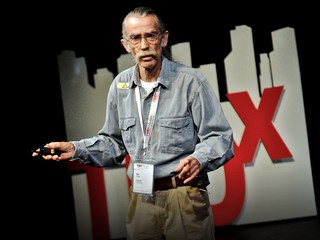
Dan Phillips
Creative houses from reclaimed stuff.
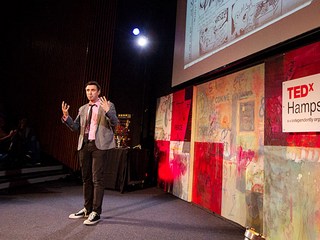
Jarrett J. Krosoczka
How a boy became an artist.
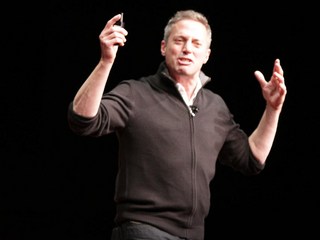
Rick Guidotti
From stigma to supermodel.
- Rather than one complex slide, encourage speakers to show several slides – each with one idea, image or data point.
- Remind your speakers that the images represent what they’re saying, so there is no need to verbally describe the images onscreen.
- Eliminate "headline and bullet points" slides; they are tiring to read.
- Consider making a rule of a maximum of six lines of text per slide. (Most of the time, just one or two lines will do!)
- To help the audience remember a person, place or thing you mention, your speaker might use images or photos.
- Encourage your speaker to use a common sans serif font (like Helvetica or Verdana) over a serif font (like Times).
Rules to remember
- Your speakers must own the rights to all images used on their slides. If they use an image under a Creative Commons license, cite the source at the bottom of the slide.

Comment faire une présentation TED Talks | 8 conseils pour améliorer votre présentation en 2024
En présentant
Léa Nguyen • 08 avril 2024 • 9 min lire
Lorsque vous souhaitez trouver une conférence sur un sujet qui vous intéresse, TED Talks présentations peut être le premier à apparaître dans votre esprit.
Leur puissance vient des idées originales, du contenu perspicace et utile et des compétences de présentation impressionnantes des conférenciers. Plus de 90,000 90,000 styles de présentation provenant de plus de XNUMX XNUMX intervenants ont été présentés, et vous vous êtes probablement retrouvé lié à l'un d'entre eux.
Quel que soit le type, il y a des choses de tous les jours parmi les présentations TED Talks que vous pouvez garder à l'esprit pour améliorer vos propres performances !
Table des matières
- Faites en sorte que votre public s'identifie en utilisant des histoires personnelles
- Faites travailler votre public
- Les diapositives sont destinées à aider, pas à noyer
- Soyez original, soyez vous
- Parlez avec clarté
- Façonnez votre langage corporel
- Soyez concis
- Terminez par une remarque forte
Principales caractéristiques des présentations TED Talks
Modèles de présentation pour les conférences ted, foire aux questions.
- Plus de conseils de présentation avec AhaSlides
Conseils de présentation avec AhaSlides
- Présentation interactive – Le guide complet
- Conseils pour donner la bonne tenue de présentation
- Comment éviter la mort par Powerpoint
- Exemples de présentations multimédia
- Exemple de présentation simple

Démarrez en quelques secondes.
Obtenez des modèles gratuits pour votre prochaine présentation interactive. Inscrivez-vous gratuitement et prenez ce que vous voulez dans la bibliothèque de modèles !
1. Faites en sorte que votre public s'identifie en utilisant des histoires personnelles
Le moyen le plus rapide de susciter une réaction émotionnelle du public dans TED Talks Presentation est de raconter une histoire de votre propre expérience.
L'essence d'une histoire est sa capacité à invoquer les émotions et l'interaction des auditeurs. Par conséquent, en faisant cela, ils peuvent se sentir liés par nature et trouver immédiatement votre discours plus "authentique", et sont donc disposés à écouter davantage de votre part.
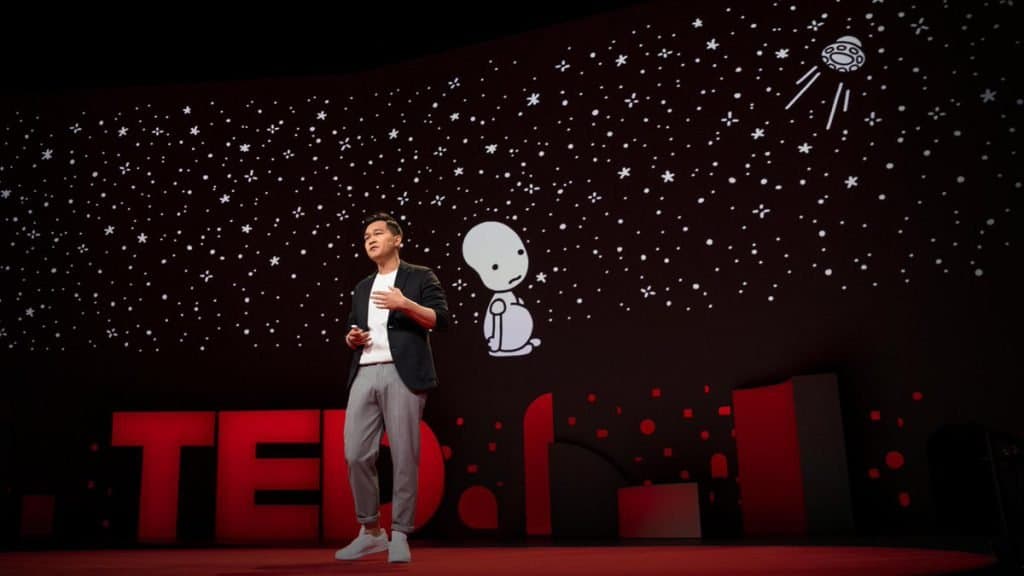
Vous pouvez également entremêler vos histoires dans votre discours pour vous forger une opinion sur le sujet et présenter votre argument de manière convaincante. Outre les preuves basées sur la recherche, vous pouvez utiliser des histoires personnelles comme un outil puissant pour créer une présentation fiable et convaincante.
Conseils pro: L'histoire « personnelle » ne doit pas être déconnectée (par exemple : Je fais partie des 1 % de personnes les plus intelligentes au monde et je gagne 1 milliard par an. ). Essayez de raconter vos histoires à vos amis pour voir s'ils peuvent s'identifier.
2. Faites travailler votre public
Aussi intéressant que soit votre discours, il peut y avoir des moments où le public détourne son attention de votre discours pendant un moment. C'est pourquoi vous devez avoir des activités qui regagnent leur attention et les engagent.
Par exemple, un moyen simple de le faire est de formuler de bonnes questions pertinentes pour votre sujet, ce qui les amène à réfléchir et à trouver une réponse. C'est un moyen courant que les intervenants TED utilisent pour engager leur public ! Les questions peuvent être posées immédiatement ou occasionnellement pendant l'exposé.
L'idée est d'apprendre à connaître leurs points de vue en leur faisant soumettre leurs réponses sur une toile en ligne comme AhaSlides , où les résultats sont mis à jour en direct, et vous pouvez compter sur eux pour discuter plus en profondeur.
Vous pouvez également leur demander de faire de petits gestes, comme fermer les yeux et réfléchir à une idée ou à un exemple pertinent à l'idée dont vous parlez, tout comme ce que Bruce Aylward a fait dans son discours sur « Comment nous allons arrêter la polio pour de bon ». .”

3. Les diapositives doivent aider, pas noyer
Des diapositives accompagnent la plupart des présentations TED Talks, et vous verrez rarement un conférencier TED utiliser des diapositives plus que colorées pleines de texte ou de chiffres.
Au lieu de cela, ils sont généralement simplifiés en termes de décoration et de contenu et ont tendance à se présenter sous la forme de graphiques, d'images ou de vidéos.
Cela aide à attirer l'attention du public sur le contenu auquel l'orateur fait référence et à flatter l'idée qu'il essaie de transmettre. Vous pouvez aussi vous en servir !
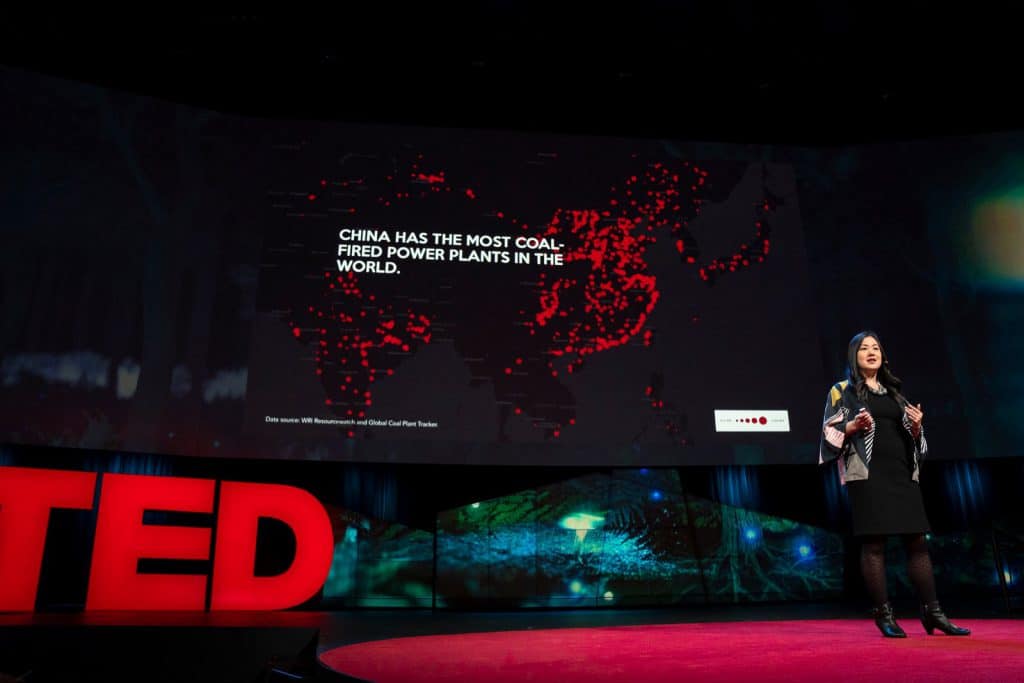
La visualisation est le point ici. Vous pouvez convertir du texte et des nombres en tableaux ou en graphiques et utiliser des images, des vidéos et des GIF. Des diapositives interactives peuvent également vous aider à vous connecter avec le public.
L'une des raisons pour lesquelles le public est distrait est qu'il n'a aucune idée de la structure de votre discours et qu'il se sent découragé de suivre jusqu'à la fin.
Vous pouvez résoudre ce problème avec la fonction "Audience Pacing" de AhaSlides , dans lequel le public peut ouvrir aller et retour pour connaître tout le contenu de vos diapositives et être toujours sur la bonne voie et préparez-vous pour vos perspectives à venir!
4. Soyez original, soyez vous-même
Cela a à voir avec votre style de présentation, COMMENT vous transmettez vos idées et CE que vous livrez.
Vous pouvez le voir clairement dans la présentation TED Talks, où les idées d'un orateur peuvent être similaires à d'autres, mais ce qui compte, c'est comment ils le voient sous un autre angle et le développent à leur manière.
Le public ne voudra pas écouter un vieux sujet avec une vieille approche que des centaines d'autres auraient pu choisir.
Réfléchissez à la façon dont vous pouvez faire la différence et ajoutez votre individualité à votre discours pour apporter un contenu précieux au public.

5. Parlez avec clarté
Vous n'êtes pas obligé de posséder une voix envoûtante qui met le public en transe, mais la projeter clairement sera très apprécié.
Par « clair », nous entendons que le public peut entendre et comprendre ce que vous avez dit pour au moins 90 %.
Les communicateurs qualifiés ont des voix fiables, malgré les émotions nerveuses ou anxieuses qu'ils peuvent ressentir.
Dans la présentation TED Talks, vous pouvez voir qu'il n'y a pratiquement aucun son étouffé. Tous les messages sont communiqués sur un ton cristallin.
La bonne chose est que vous pouvez entraîner votre voix pour être meilleure !
Des coachs vocaux et d'élocution et même Applications de formation IA pourraient aider, de la façon de respirer correctement à la façon de placer votre langue lors de l'énonciation, ils améliorent considérablement votre tonus, votre rythme et votre volume à long terme.
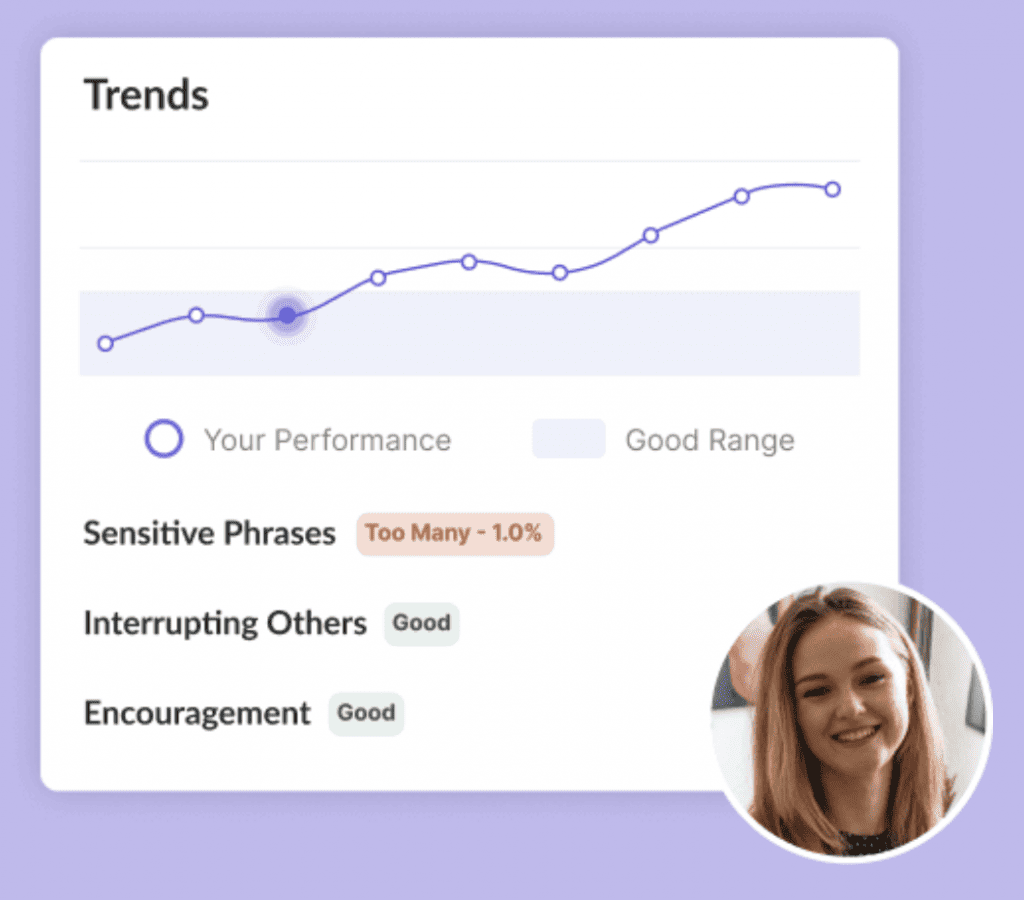
6. Façonnez votre langage corporel
L'expression non verbale a 65% à 93% plus d'influence que le texte réel, donc la façon dont vous vous comportez compte vraiment !
Lors de votre prochaine présentation TED Talks, n'oubliez pas de vous tenir droit, les épaules en arrière et la tête haute. Évitez de vous affaler ou de vous appuyer contre le podium. Cela projette la confiance et engage le public.
Utilisez des gestes ouverts et accueillants avec vos mains, comme les garder desserrées à vos côtés ou les paumes tournées vers le haut dans un haussement d'épaules.
Déplacez-vous délibérément autour de la scène pendant que vous parlez pour signaler votre enthousiasme pour votre sujet. Évitez de gigoter, de faire les cent pas ou de vous toucher excessivement le visage.
Parlez du fond du cœur avec une réelle passion et la conviction que votre grande idée compte. Lorsque votre propre enthousiasme est authentique, il devient contagieux et attire les auditeurs.
Pause pour effet en restant immobile et silencieux entre les points clés. Une posture immobile attire l'attention du public et lui laisse le temps de traiter vos informations, et vous laisse également le temps de réfléchir au point suivant.
Prenez une grande respiration perceptible avant de vous lancer dans une nouvelle section de votre discours. L'action physique aide à signaler une transition au public.
C'est plus facile à dire qu'à parler, mais si vous tenez compte du fait que nous sommes des humains pleins de mouvements et d'expressions animés, qui nous différencient des robots, nous pouvons permettre à notre corps de s'exprimer librement dans la présentation TED Talks.
Conseils : demander questions ouvertes vous aide à recueillir davantage d'avis d'audience, ce qui fonctionne parfaitement avec un outil de brainstorming adapté !

7. Soyez concis
Nous avons tendance à penser que nos points de présentation sont inadéquats et souvent élaborés plus que nous ne le devrions.
Visez environ 18 minutes comme dans les présentations TED Talks, ce qui est plus que suffisant compte tenu de la façon dont nous sommes distrayants dans ce monde moderne.
Créez un plan avec des sections principales et chronométrez-vous pour rester dans le temps imparti pendant que vous pratiquez et affinez votre discours. Vous pouvez envisager de suivre ce format de chronologie :
- 3 minutes – Raconter une histoire avec des récits simples et concrets et des anecdotes.
- 3 minutes - Accédez à l'idée principale et les points clés.
- 9 minutes – Développez ces points clés et racontez une histoire personnelle qui met en évidence votre idée principale.
- 3 minutes – Concluez et passez du temps à interagir avec le public, éventuellement avec une séance de questions-réponses en direct .
Favoriser un environnement de densité et de richesse dans les contraintes d'un bref délai.
Réduisez votre contenu à l'essentiel. Supprimez les détails inutiles, les tangentes et les mots de remplissage.
Concentrez-vous sur la qualité plutôt que sur la quantité. Quelques exemples bien conçus sont plus puissants qu'une longue liste de faits dans les présentations TED Talks.

8. Terminez par une remarque forte
Croyez-le ou non, votre objectif pour des présentations TED Talks parfaites va au-delà du simple partage d'informations intéressantes. Lorsque vous préparez votre discours, réfléchissez à la transformation que vous souhaitez déclencher chez vos auditeurs.
Quelles pensées voulez-vous planter dans leur esprit ? Quelles émotions souhaitez-vous susciter en eux ? Quelles actions espérez-vous qu'ils seront inspirés à entreprendre lorsqu'ils quitteront l'auditorium ?
Votre appel à l'action peut être aussi simple que de demander au public de voir votre sujet central sous un nouveau jour.
La prémisse même des présentations des conférences TED est que les idées qui valent la peine d'être diffusées sont celles qui valent la peine d'être mises en pratique.
Sans un appel clair à l'action, votre discours peut être intrigant mais finalement indifférent à vos auditeurs. Avec un appel à l'action, vous déclenchez un rappel mental qu'un changement est nécessaire.
Votre appel à l'action ferme et ciblé est le point d'exclamation signalant que quelque chose doit maintenant être fait - et vos auditeurs sont ceux qui devraient franchir cette étape.
Alors ne vous contentez pas d'informer votre public, poussez-le à voir le monde sous un nouveau jour et incitez-le à prendre des mesures qui correspondent à votre idée importante !
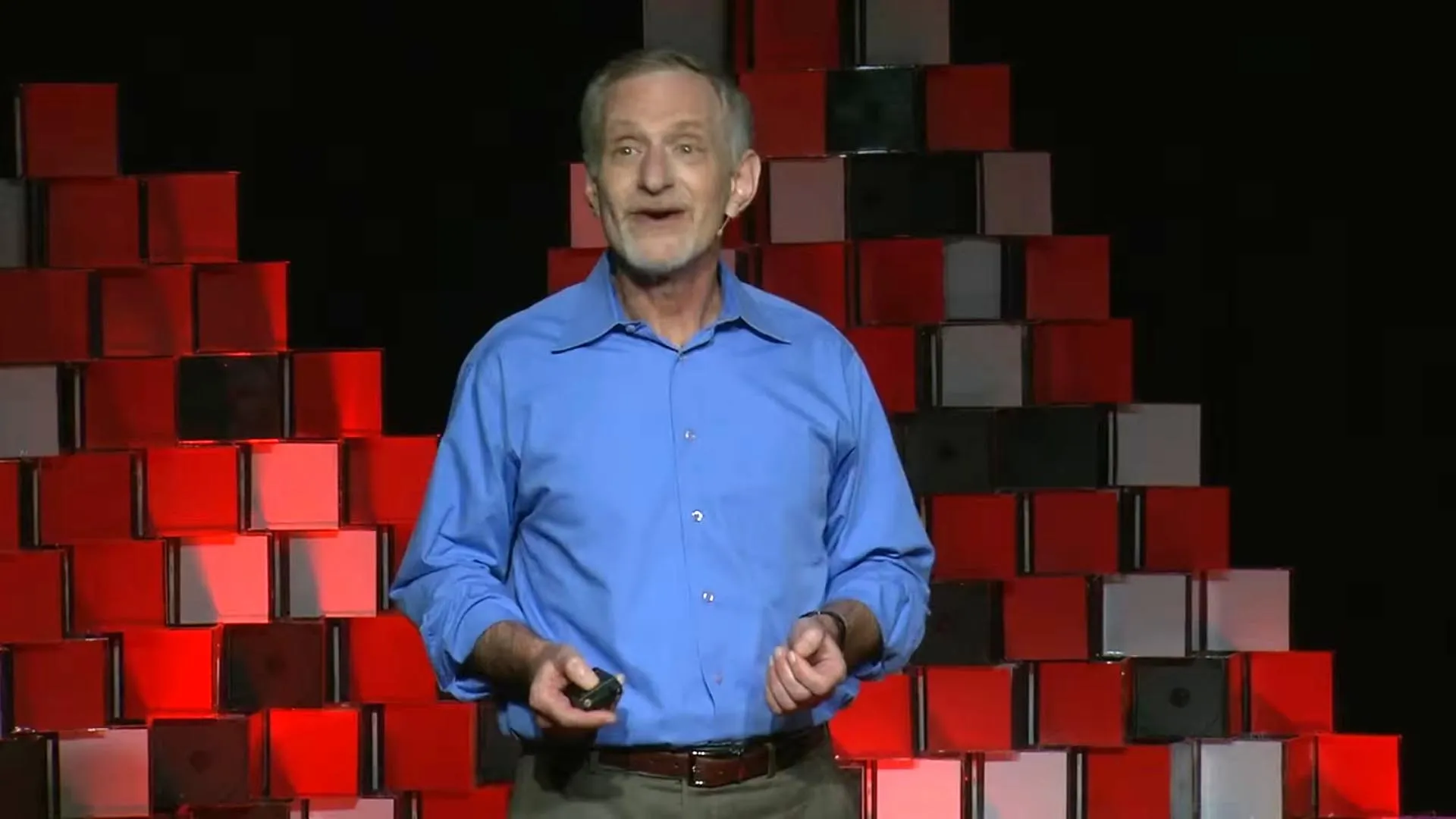
- Simplicité : les diapositives TED sont visuellement épurées. Ils se concentrent sur une seule image puissante ou sur quelques mots percutants. Cela permet au public de rester concentré sur le message de l'orateur.
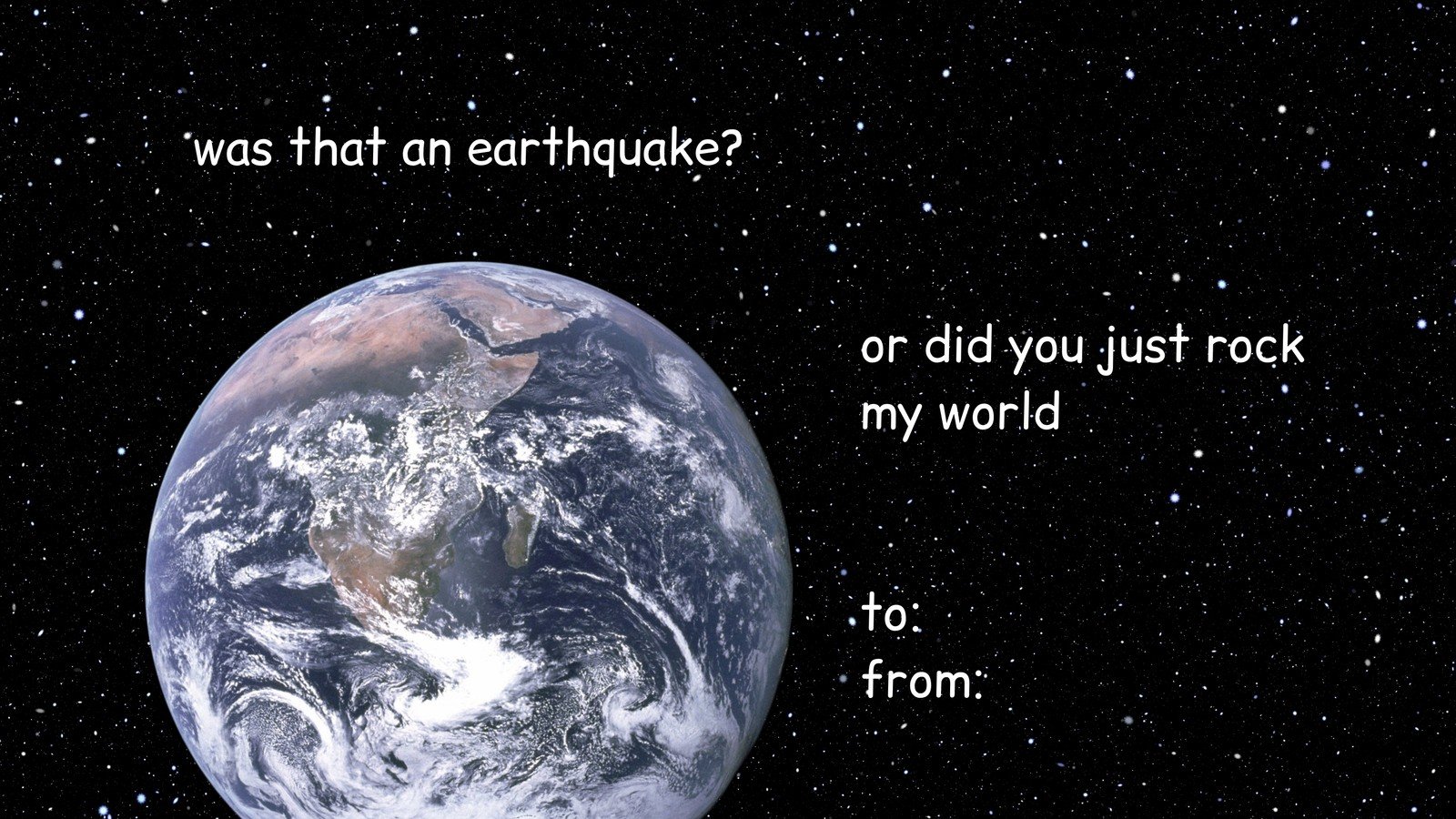
- Support visuel : des images, des diagrammes ou de courtes vidéos sont utilisés de manière stratégique. Ils renforcent l’idée centrale évoquée par l’orateur, et ne se contentent pas de décorer.
- Typographie percutante : les polices sont grandes et faciles à lire depuis le fond d'une pièce. Le texte reste minimal, mettant l'accent sur les mots-clés ou les concepts fondamentaux.
- Contraste élevé : il existe souvent un contraste élevé entre le texte et l'arrière-plan, ce qui rend les diapositives visuellement frappantes et faciles à lire, même à distance.
Amuse-toi! Ajouter fonctionnalités interactives !
- Générateur d'équipe aléatoire | Le créateur de groupe aléatoire 2024 est révélé
- Créateur de quiz en ligne sur l'IA | Créez des quiz en direct
- Organisez une séance de questions-réponses en direct
- Sondage AhaSlides – Meilleur outil d'enquête interactif 2024
- 12 outils d'enquête gratuits en 2024 | AhaSlides révèle
Vous souhaitez proposer une présentation de style TED Talk qui reste gravée dans l'esprit du public ? AhaSlides propose une multitude de modèles gratuits et une bibliothèque dédiée pour les utilisateurs comme vous ! Découvrez-les ci-dessous :

Questions de connaissances générales

Appréciation du personnel

Ordre du jour des réunions d'équipe mensuelles
Faits marquants.
La clé est de distiller votre grande idée jusqu'à son essence, de raconter une histoire pour l'illustrer et de parler de manière improvisée avec une passion et un enthousiasme naturels. Pratique, pratique, pratique.
Il n'est pas facile d'être un maître présentateur, mais pratiquez ces 8 conseils si souvent que vous pourrez faire de grands progrès dans vos compétences de présentation ! Laissez AhaSlides vous accompagner sur le chemin !
Qu'est-ce qu'une présentation TED Talk ?
Une conférence TED est une présentation courte et percutante donnée lors de conférences TED et d'événements connexes. TED signifie Technologie, Divertissement et Design.
Comment faire une présentation TED Talk ?
En suivant ces étapes - en vous concentrant sur votre grande idée, en racontant des histoires pertinentes, en la gardant courte, en répétant minutieusement et en parlant avec confiance - vous serez sur la bonne voie pour livrer une présentation TED efficace et percutante.
Quelle est la différence entre une conférence TED et une présentation standard ?
Les conférences TED sont conçues pour être : plus courtes, plus concises et ciblées ; raconté d'une manière visuellement attrayante et axée sur la narration ; et livré d'une manière instantanée et inspirante qui provoque la réflexion et diffuse des idées importantes.
Les TED Talks ont-ils des présentations ?
Oui, les TED Talks sont en fait de courtes présentations données lors de conférences TED et d'autres événements liés à TED.

Leah Nguyen
Des mots qui convertissent, des histoires qui collent. Je transforme des idées complexes en récits engageants, aidant ainsi le public à apprendre, à se souvenir et à agir.
En savoir plus sur AhaSlides


IMAGES
VIDEO
COMMENTS
How is a TED style talk different to a business presentation? TED style talks are delivered without notes and the speaker wears a lapel or headset microphone and is never behind a lectern. TED ...
In the past few years, TED, TEDx, and TED-style talks have become so pervasive and so popular that, even in business settings, speakers are often asked to give "a TED talk." (And BTW, TEDx refers to independently organized events held for local communities, or communities of interest.) If you have a TED, TEDx, or TED-style talk coming up, here are the ways in which your talk will be ...
The secret structure of great talks. From the "I have a dream" speech to Steve Jobs' iPhone launch, many great talks have a common structure that helps their message resonate with listeners. In this talk, presentation expert Nancy Duarte shares practical lessons on how to make a powerful call-to-action. 18:00.
What Is A TED Talk? To get right to business, a TED talk is a short presentation that focuses on technology, entertainment, and/or design. Sorry to disappoint any of you hoping a guy named "Ted" founded the TED Organization. 😬 To put it another way, TED is a non-profit institution that partners with individuals to assist in sharing ideas globally.
Imagine stepping into a world where ideas come to life, sparking conversations and igniting change. That's the power of a TED Talk—a presentation where visionaries share groundbreaking concepts designed to educate and inspire. Born from a blend of technology, entertainment, and design (TED), these talks have blossomed into global phenomena.
Photo: James Duncan Davidson/TED TED Talks. People listen. TED is a nonprofit with a mission to "spread ideas." It began as a one-off conference (on technology, entertainment and design) in 1984—eventually evolving to a point where it launched an audio and podcast series called TED Talks.. From the history page on their site: "The first six TED Talks were posted online on June 27 ...
This will ensure that you know the speech and that you're well aware of where you might need to slow down or speed up. 10. Have two natural ending points. I gave a TED-style talk in India with a head cold. I knew I'd possibly lose track of timing. Give your talk two natural ending points.
Here is a TED-style guide to help you structure your presentation: 1. Start with a Captivating Hook. Begin your talk with a compelling hook that grabs the audience's attention. This could be a thought-provoking question, a surprising fact, a powerful quote, or a relatable anecdote.
TED Talks have become a global phenomenon, captivating audiences with their powerful ideas and inspiring speakers. In this video, you'll learn TED talk prese...
Presentation expert Nancy Duarte, who gave the TED Talk " The secret structure of great talks ," has built her career helping people express their ideas in presentations. The author of Slide:ology and Resonate, Duarte has just released a new book through the Harvard Business Review: The HBR Guide to Persuasive Presentations.
A TED-style talk brings a different approach to normal business presentations. It also brings a new level of engagement that a normal business presentation does not. For example, they can take a case study presentation and make it sound like a story. It can take a normal concept we've known for years and flip it on its head.
Delivering a great presentation sounds like a daunting task - but really, it's all about how you structure it. Learning these presentation skills and structu...
For more than 30 years, the TED conference series has presented enlightening talks that people enjoy watching. In this article, Anderson, TED's curator, shares five keys to great presentations ...
3 minutes - Tell a story with simple, concrete narratives and anecdotes. 3 minutes - Get to the main idea and key points. 9 minutes - Elaborate on these key points and relate a personal story that highlights your main idea. 3 minutes - Wrap up and spend time interacting with the audience, possibly with a live Q&A.
It also helps to understand the different types of talks worth spreading. That way, you know what you're looking for. A TEDx Talk is a showcase for speakers presenting great, well-formed ideas in under 18 minutes.
The best way to make sure the attention stays on you is to limit word count to no more than 10 words per slide. As presentation expert Nancy Duarte says "any slide with more than 10 words is a document.". If you really do need a longer explanation of something, handouts or follow-up emails are the way to go.
Speakers should talk like they talk, not how they write. This is why it's sometimes better for speakers to simply outline their talks and never produce a full written script. Make sure that your speakers' language is conversational in tone, never bombastic. Encourage honest, contagious emotions - wonder, optimism, anger, surprise, etc.
Here, he shares 6 specific tips for creating the most effective slides. ( Note: All of the examples below were taken from the actual slides of TED speakers.) 1. Do keep your slides simple and succinct. "The most common mistake I see is slides that are overcrowded. People tend to want to spell everything out and cover too much information ...
3. Determine, in advance, what will attract the most attention. When it comes to how the brain responds to stimuli, seeing a slide is like hearing "don't think of a big grey elephant.". Just ...
Grasp the concept of these 6 tips from the TED TALKS book to produce fascinating presentation slides.
What is a TED Talk? TED Talks are brief, powerful presentations of ideas presented by experienced speakers at TED and TEDx conferences across the world. What distinguishes TED Talks is that they are generally recognized as highly impactful, motivating, inspiring and insightful. These presentations are easily digestible due to their brief nature.
4. Your body language may shape who you are. Speaker: Amy Cuddy. With nearly 50 million views, social psychologist Amy Cuddy's now well-known TED Global 2012 Talk can help IT leaders harness another important aspect of presenting: body language. Her talk is not simply about how body language impacts how others see us, but also how we see ...
Explain to them that their talk is strong enough without them. When your speakers do have slides, the general consensus is that less is more . A single, strong, graphic image or succinct line of text will tell your speaker's story better than a crowded collage of pictures or long paragraph.
96 likes, 0 comments - honors_ud on April 18, 2024: "Yesterday, four of our Honors thesis writers presented their research in a TED-style talk at the 2024 Stander Symposium! The presentation...". Yesterday, four of our Honors thesis writers presented their research in a TED-style talk at the 2024 Stander Symposium!
Le moyen le plus rapide de susciter une réaction émotionnelle du public dans TED Talks Presentation est de raconter une histoire de votre propre expérience. L'essence d'une histoire est sa capacité à invoquer les émotions et l'interaction des auditeurs.